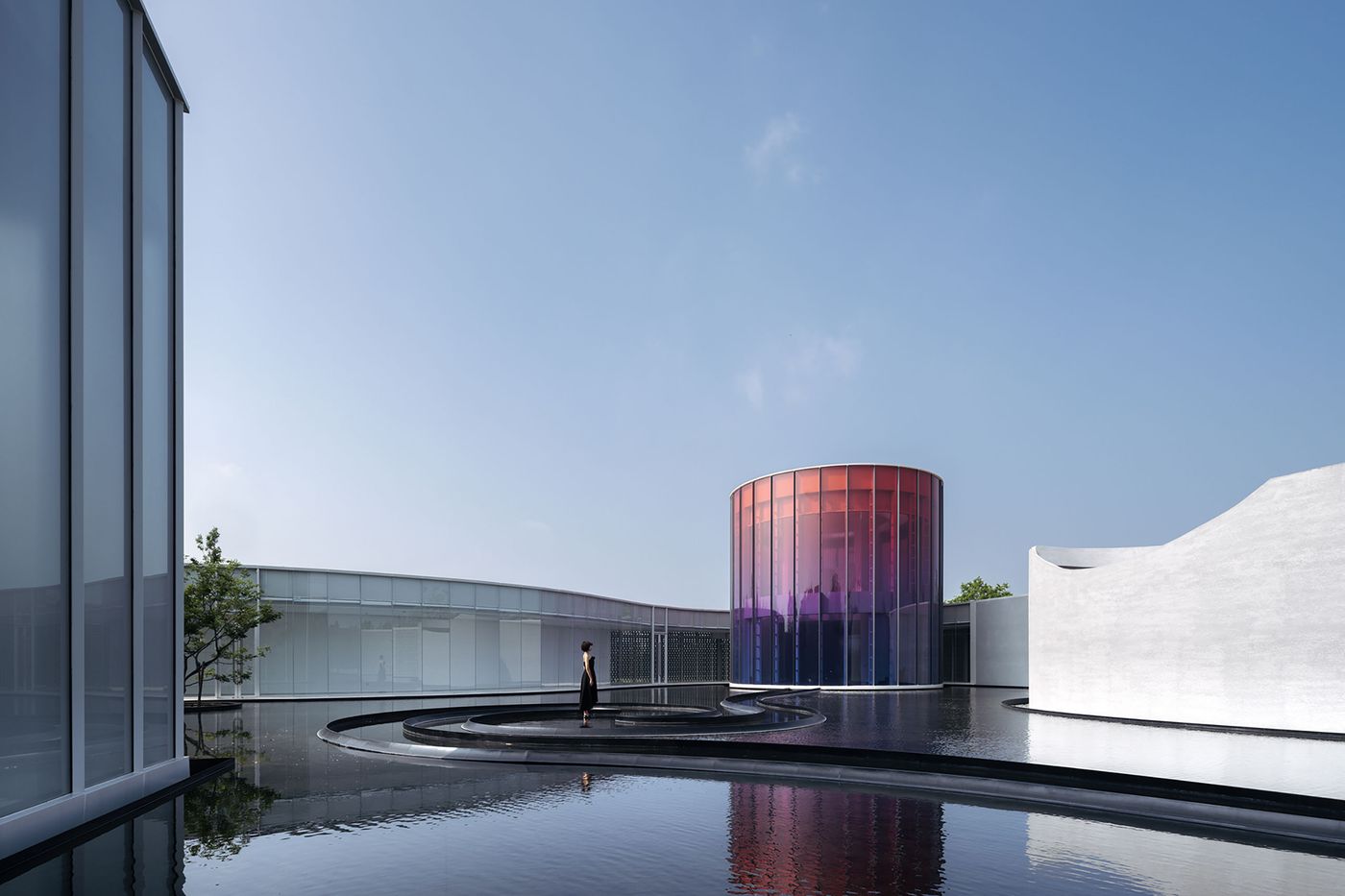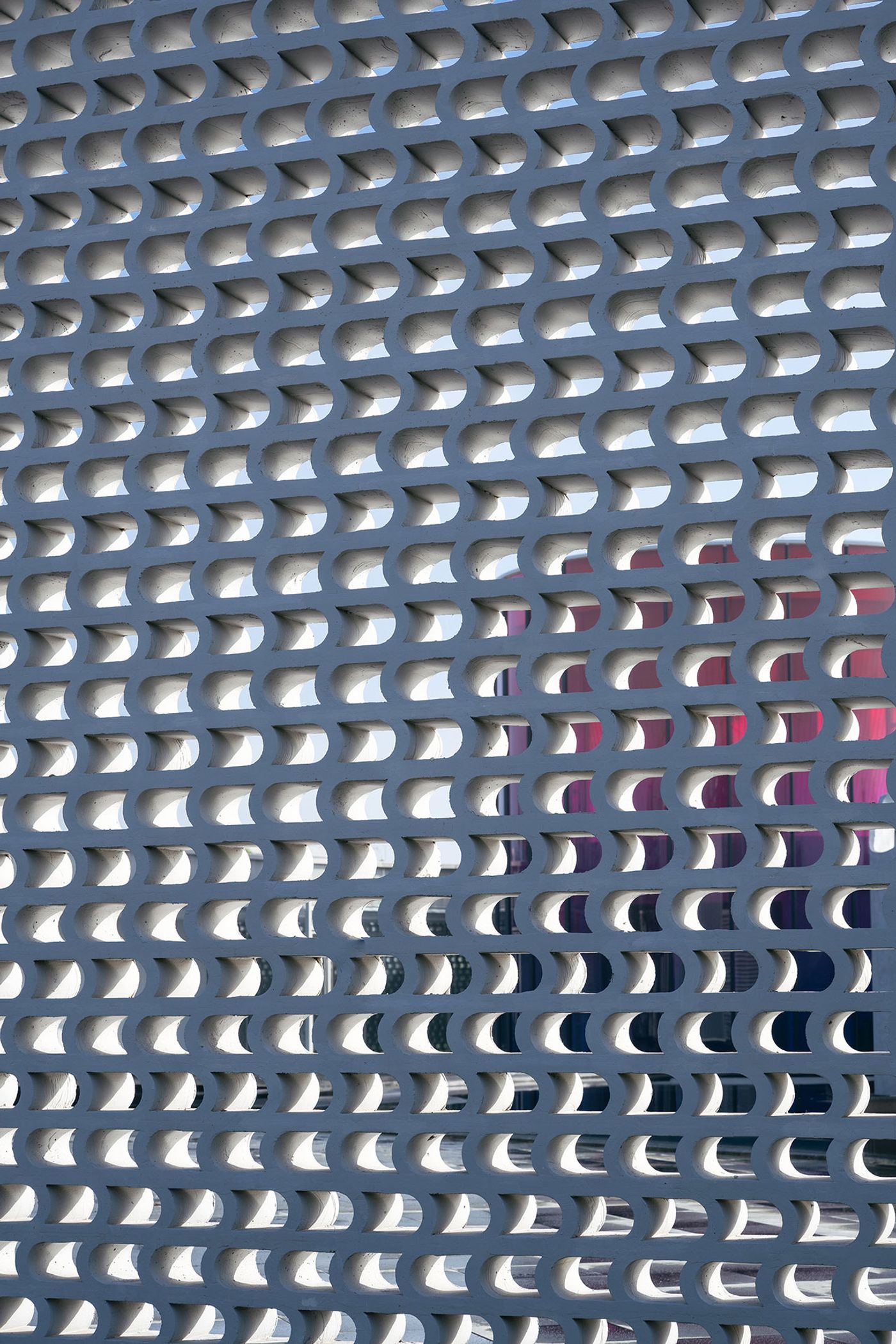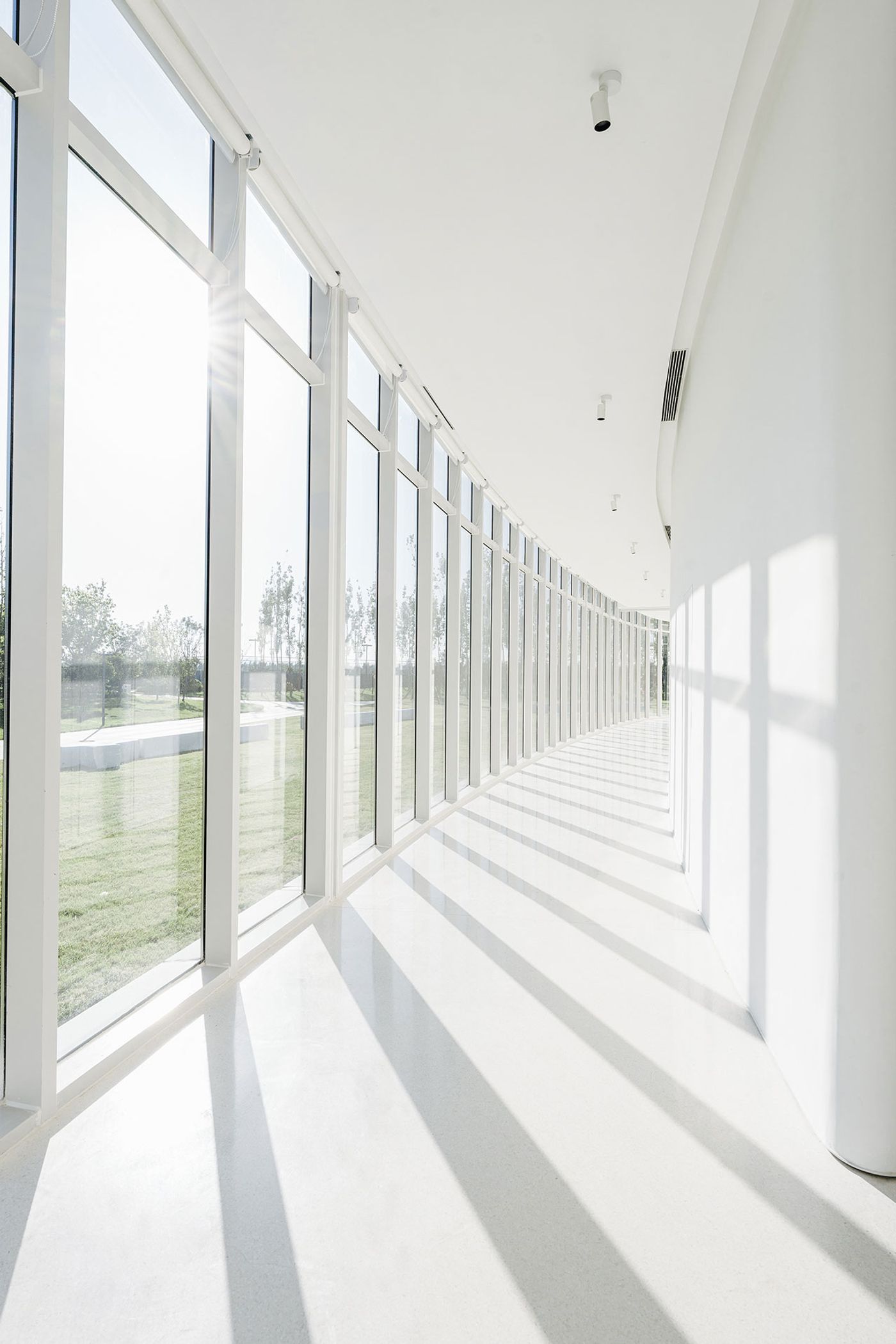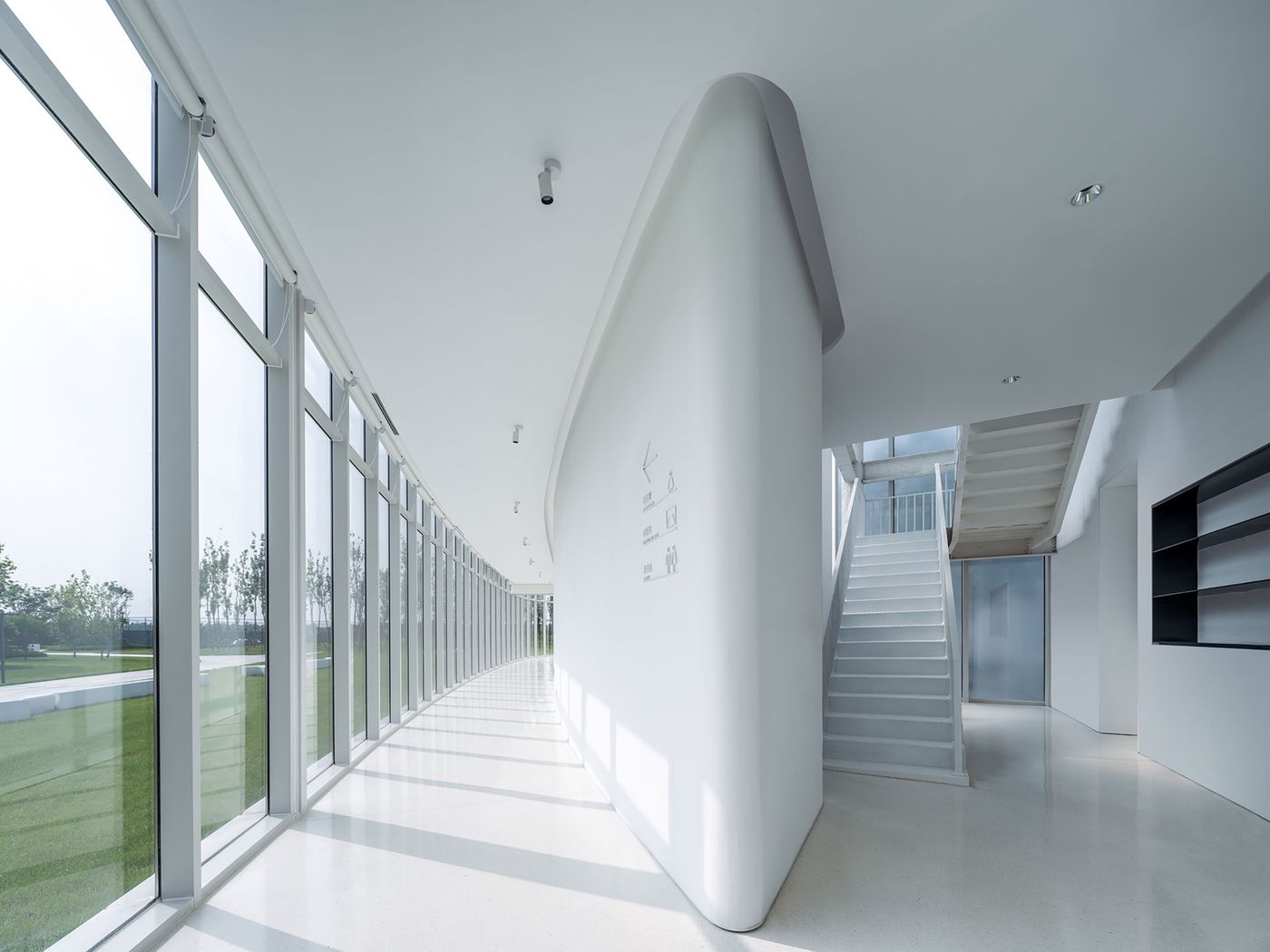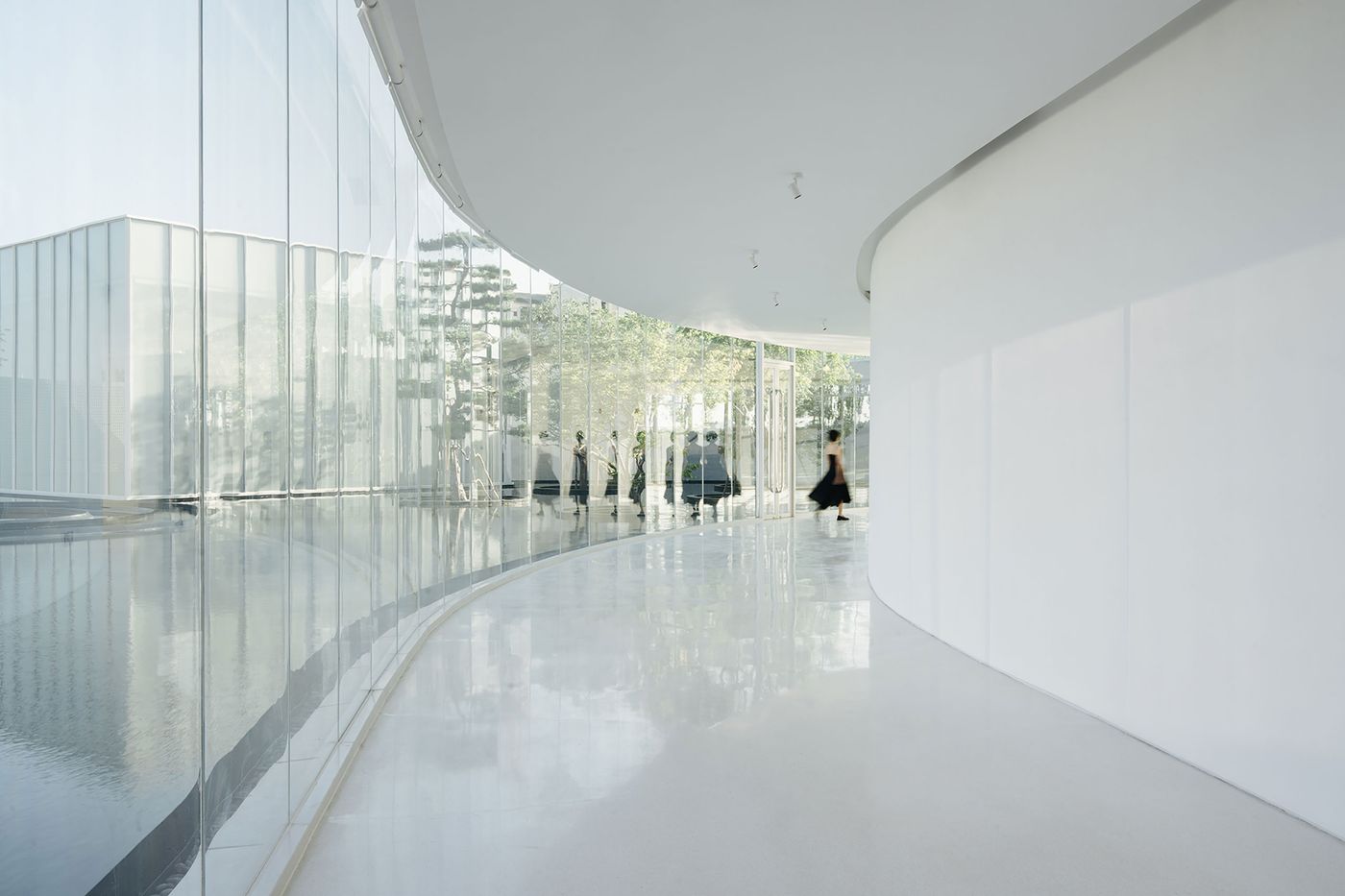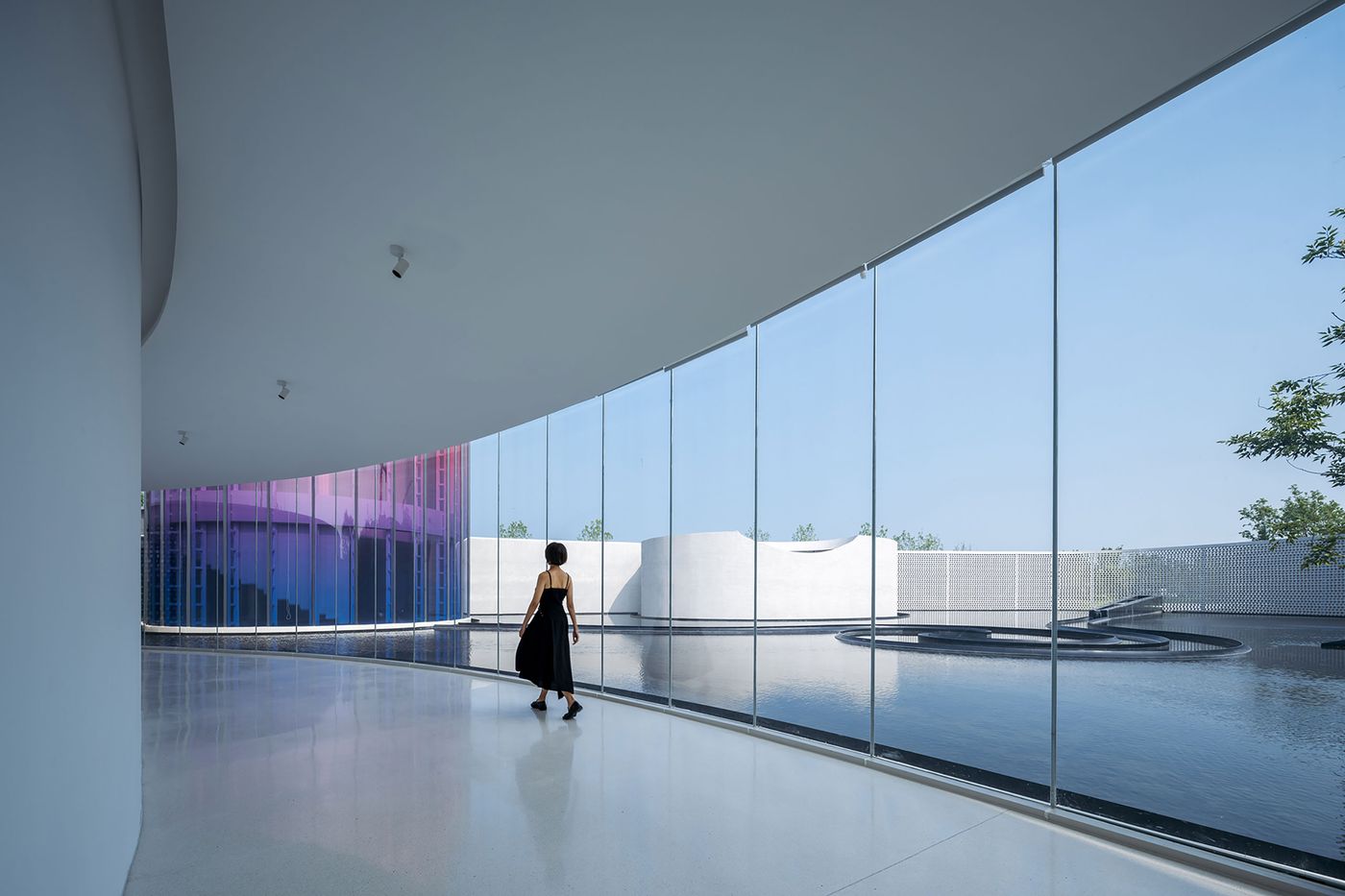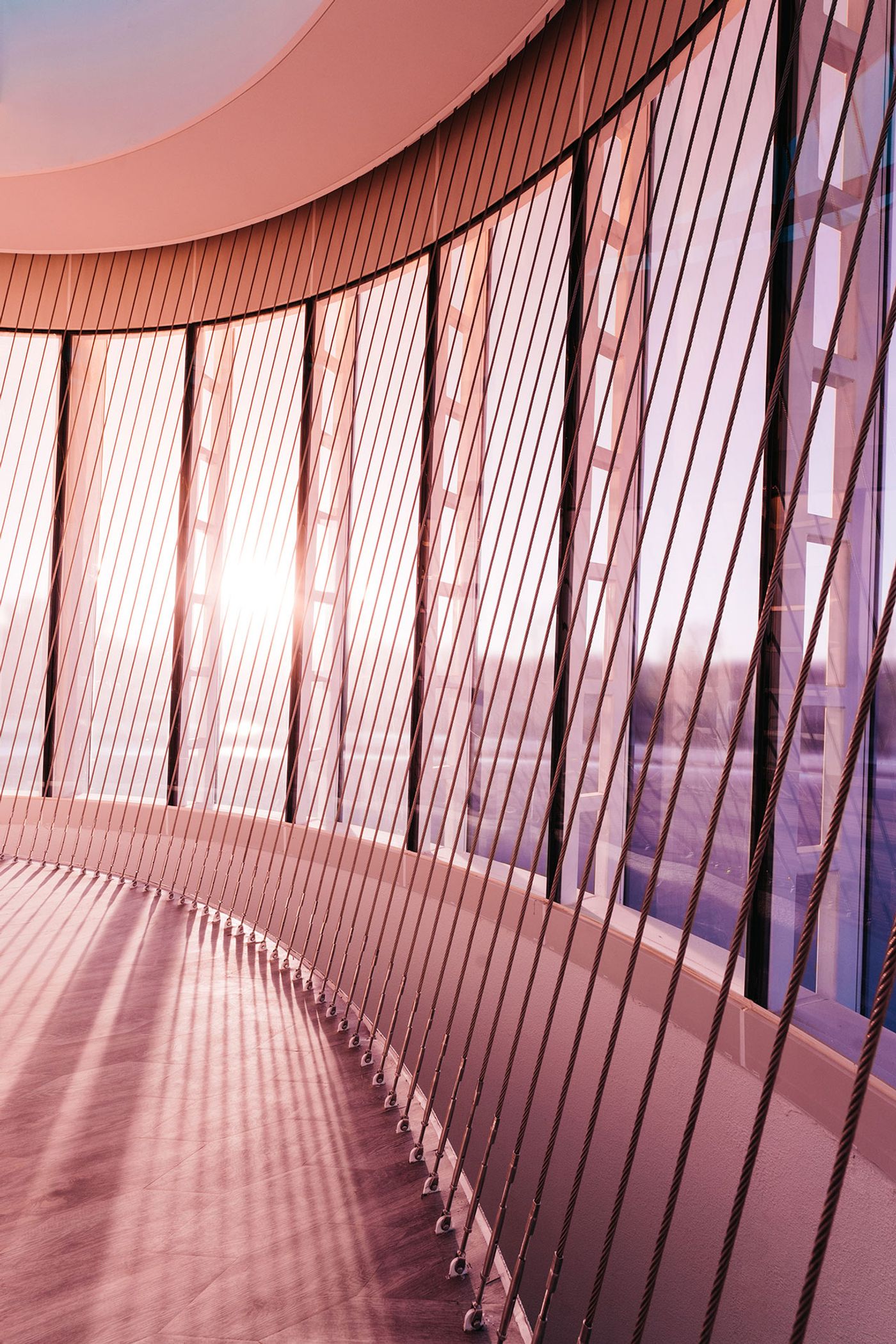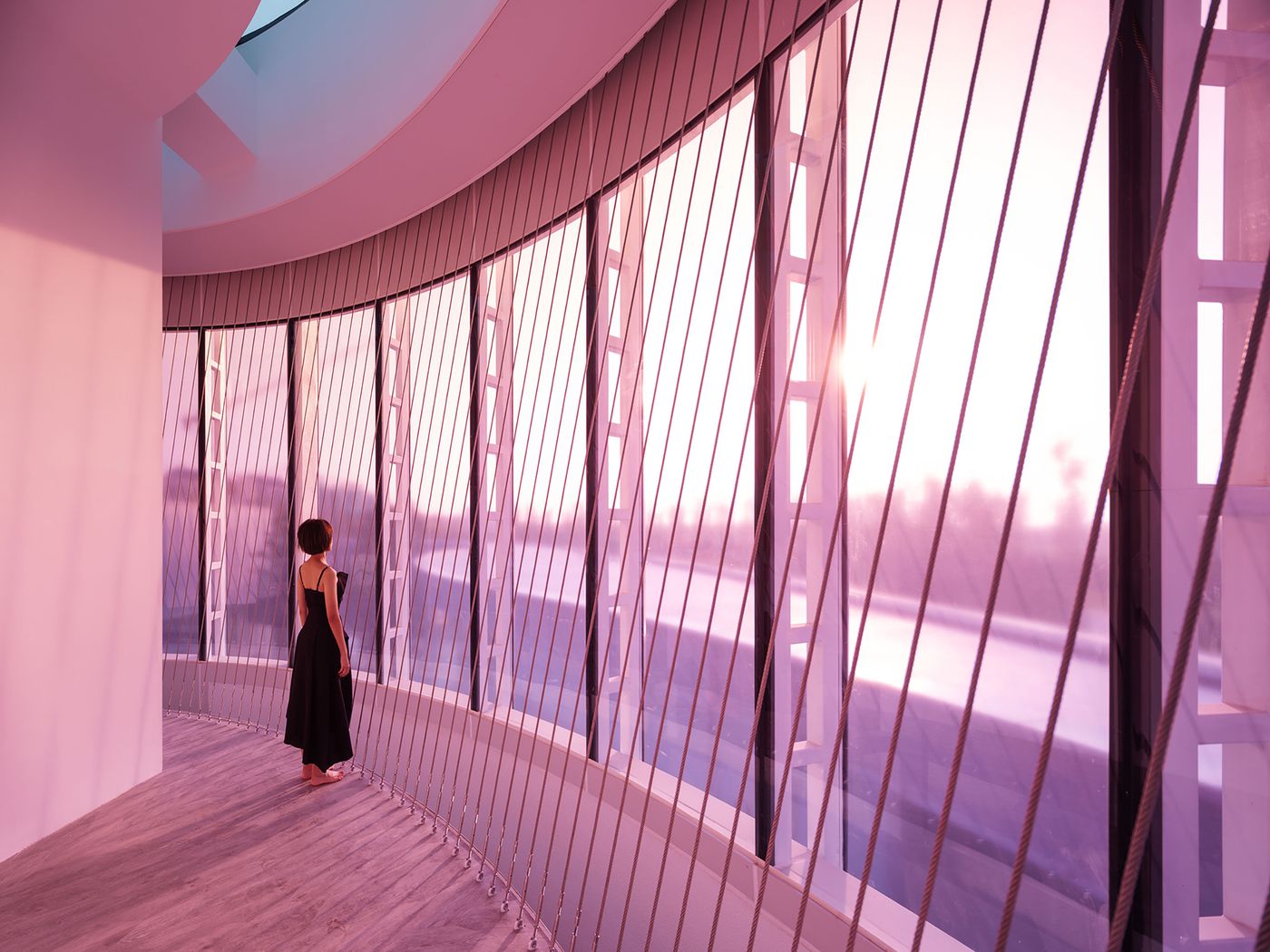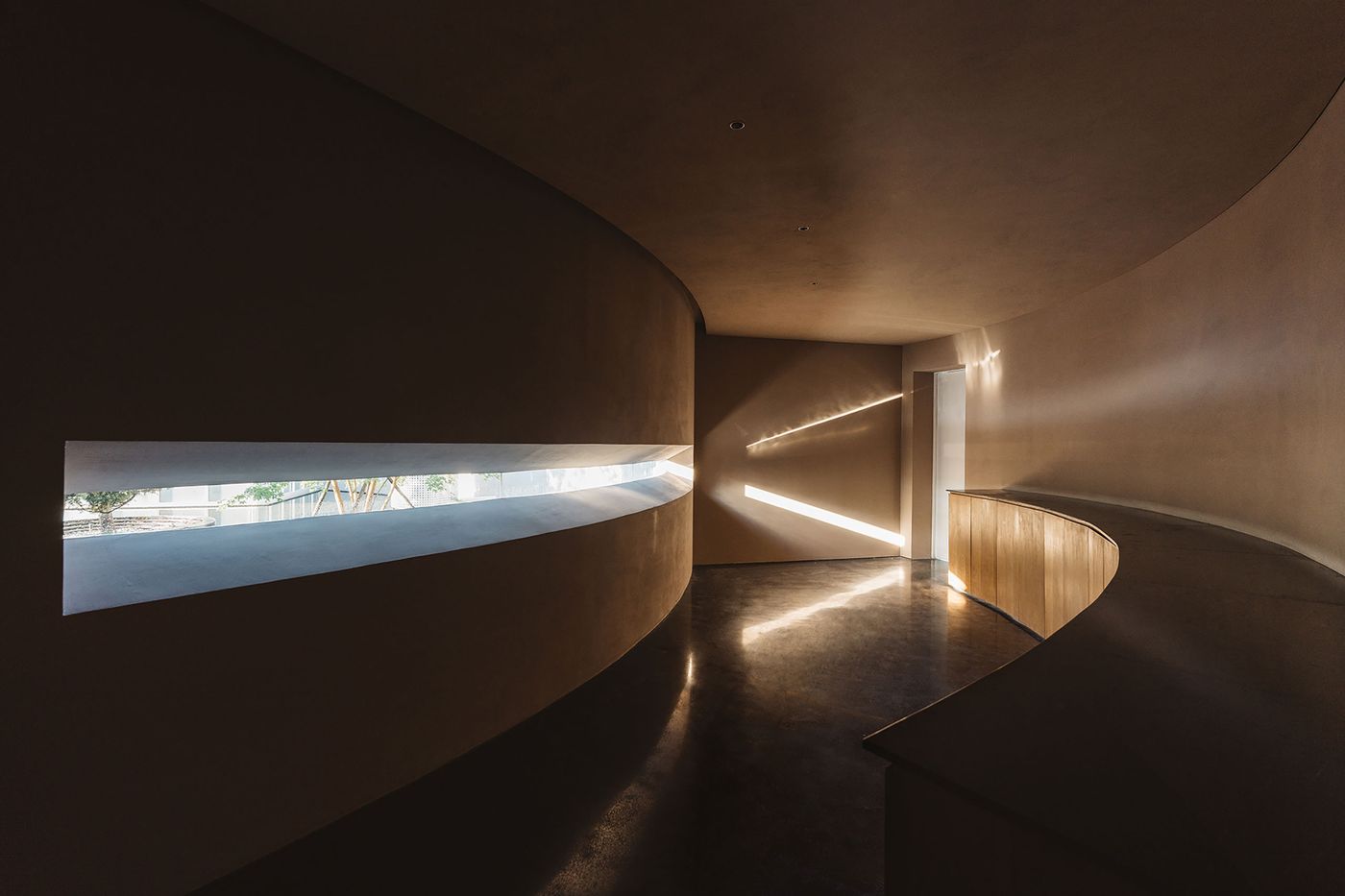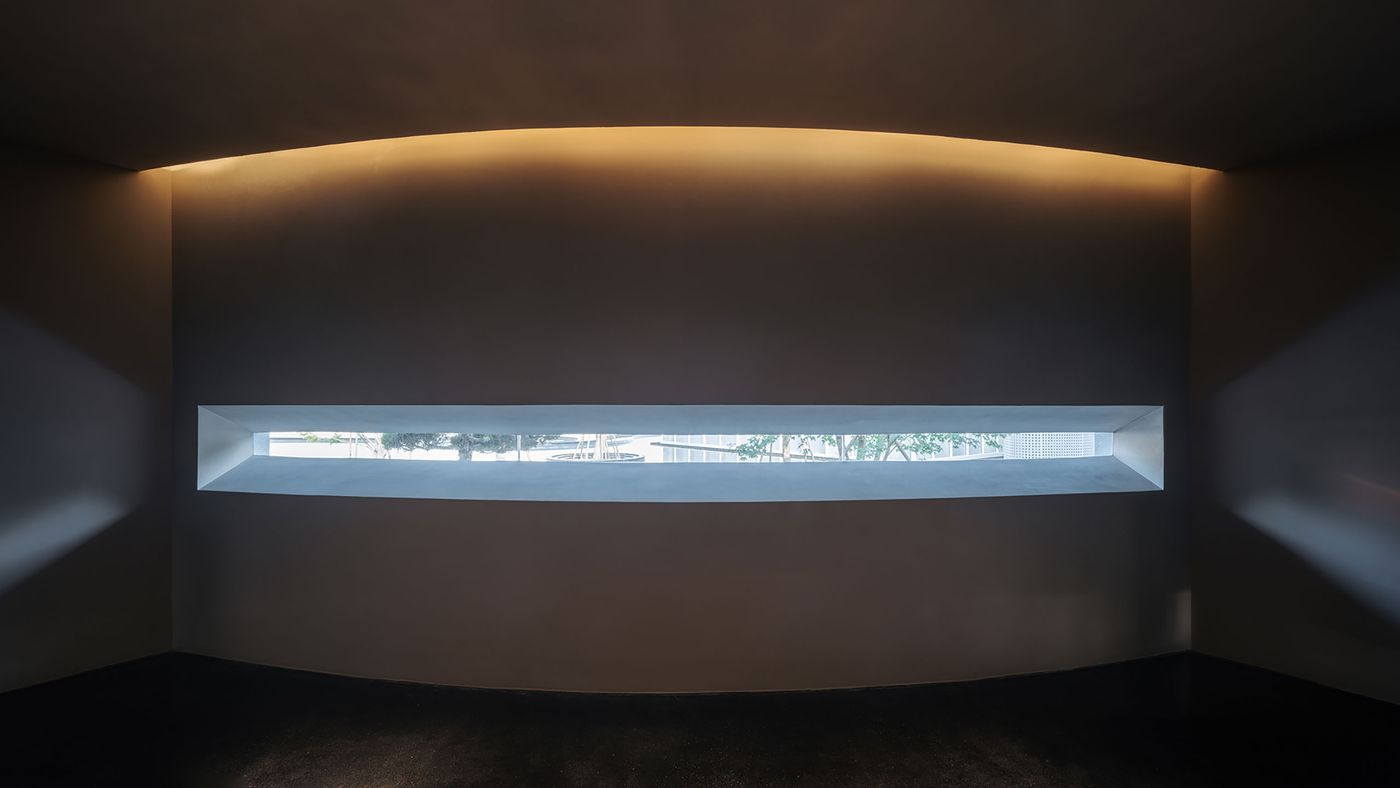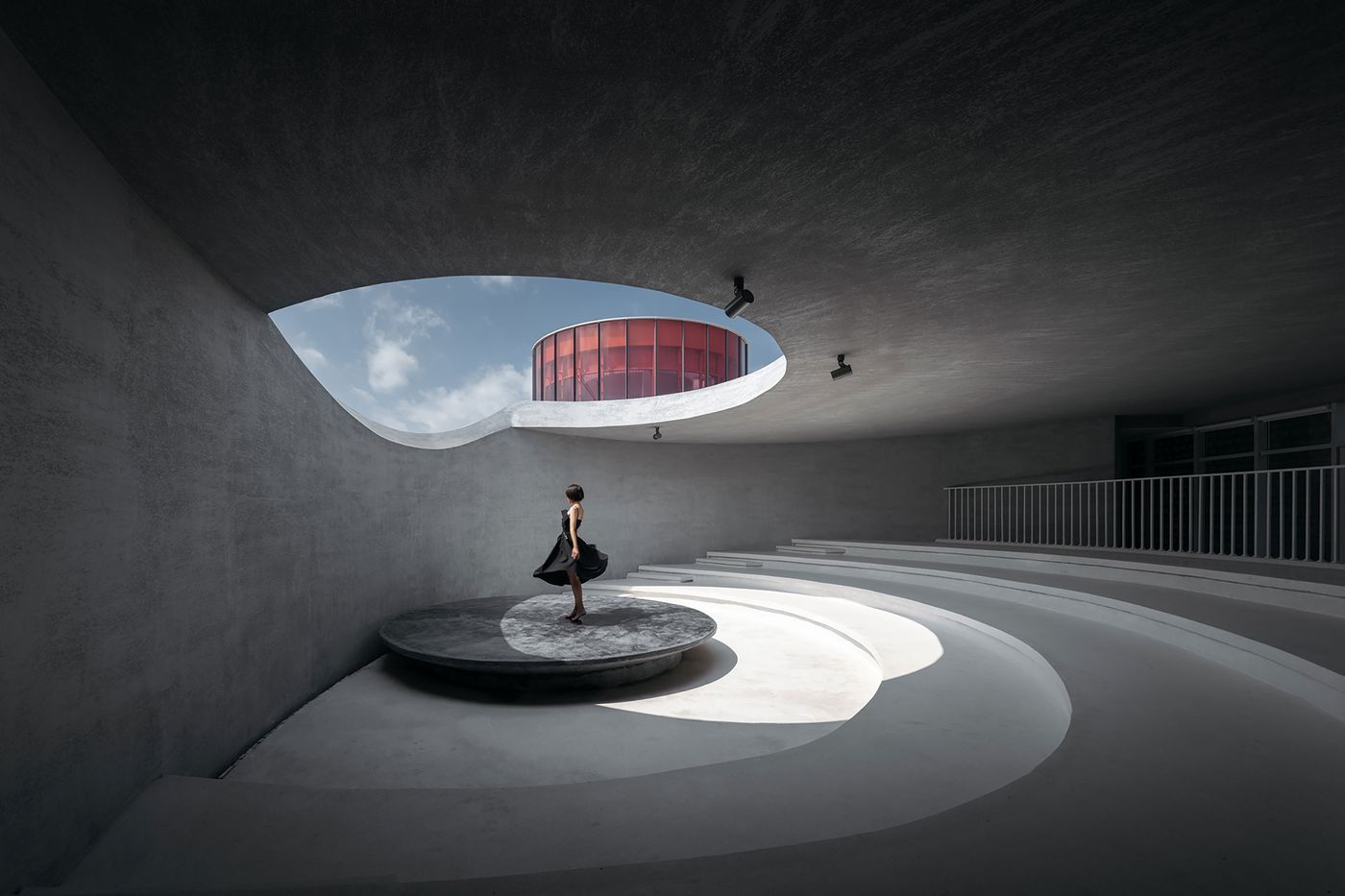
A Meditative Culture Centre in Northeastern China by Wutopia Lab is Inspired by Chinese Ink Drawings
Words by Yatzer
Location
Qinhuangdao, China
A Meditative Culture Centre in Northeastern China by Wutopia Lab is Inspired by Chinese Ink Drawings
Words by Yatzer
Qinhuangdao, China
Qinhuangdao, China
Location
Conceived as a meditative oasis for those who want to “be free from worldly distractions”, the Monologue Art Museum in the coastal city of Qinhuangdao in north-eastern China, caught our eye for its sculptural idiosyncrasy and unapologetic introversion. In response to a multipurpose programmatic brief that includes an art gallery, theatre, yoga room, dance studio and tea room, Shanghai-based architectural practice Wutopia Lab designed a series of “introverted” monolithic volumes around a reflecting pool celebrating solitude and quietude. Embracing an organic design language of soft curves and sinuous lines, the team have imbued the building with a meditative sensibility, made all the more immersive by a minimalist aesthetic, the interplay of transparency and solidity, intermittent views of the surrounding park, and the calming effect of water. The result is a cultural centre that doubles as a serene refuge amid a bustling urban environment where visitors can decouple from external distractions and embark, as its name suggests, on a monologue of self-reflection.
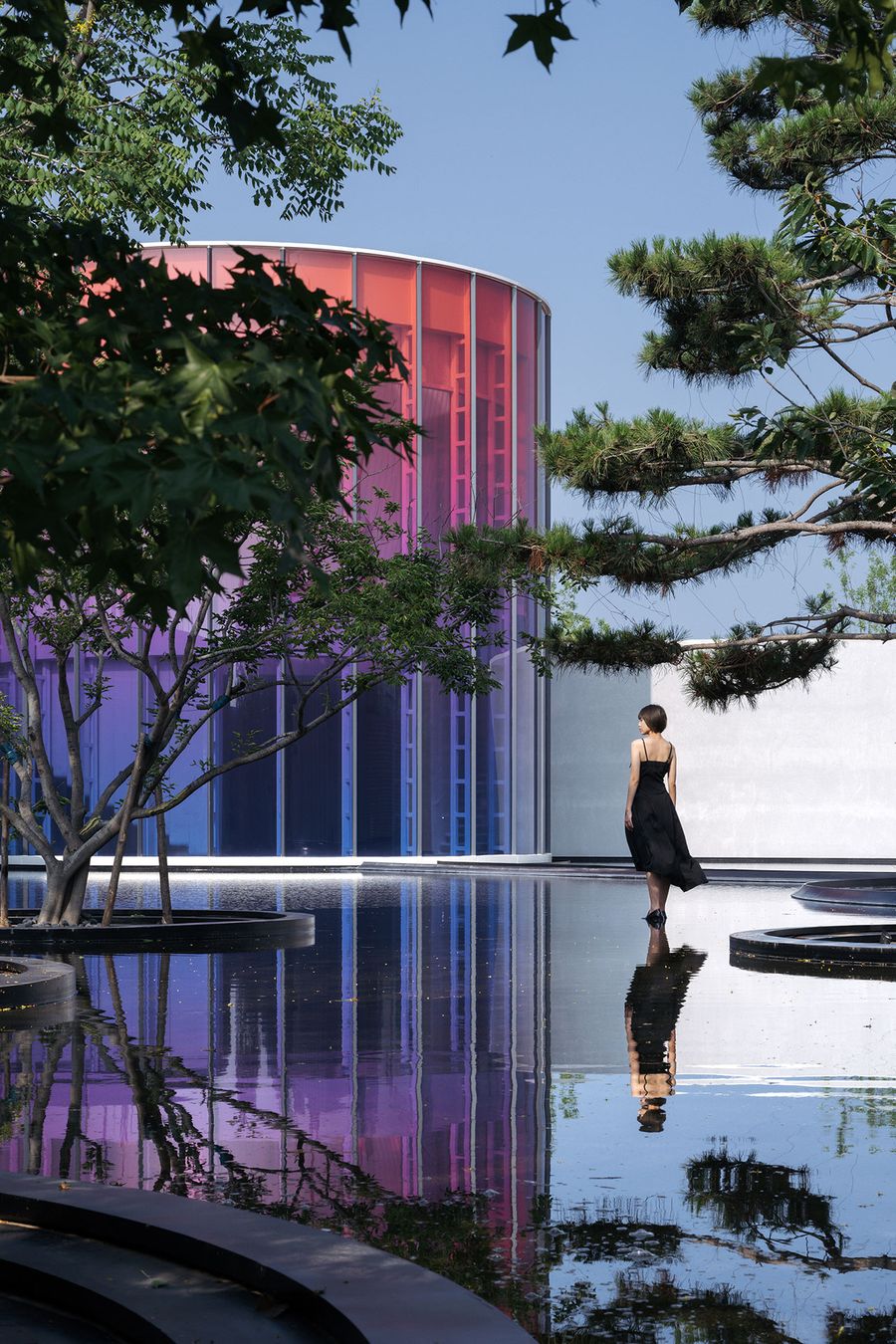
Photography © CreatAR Images
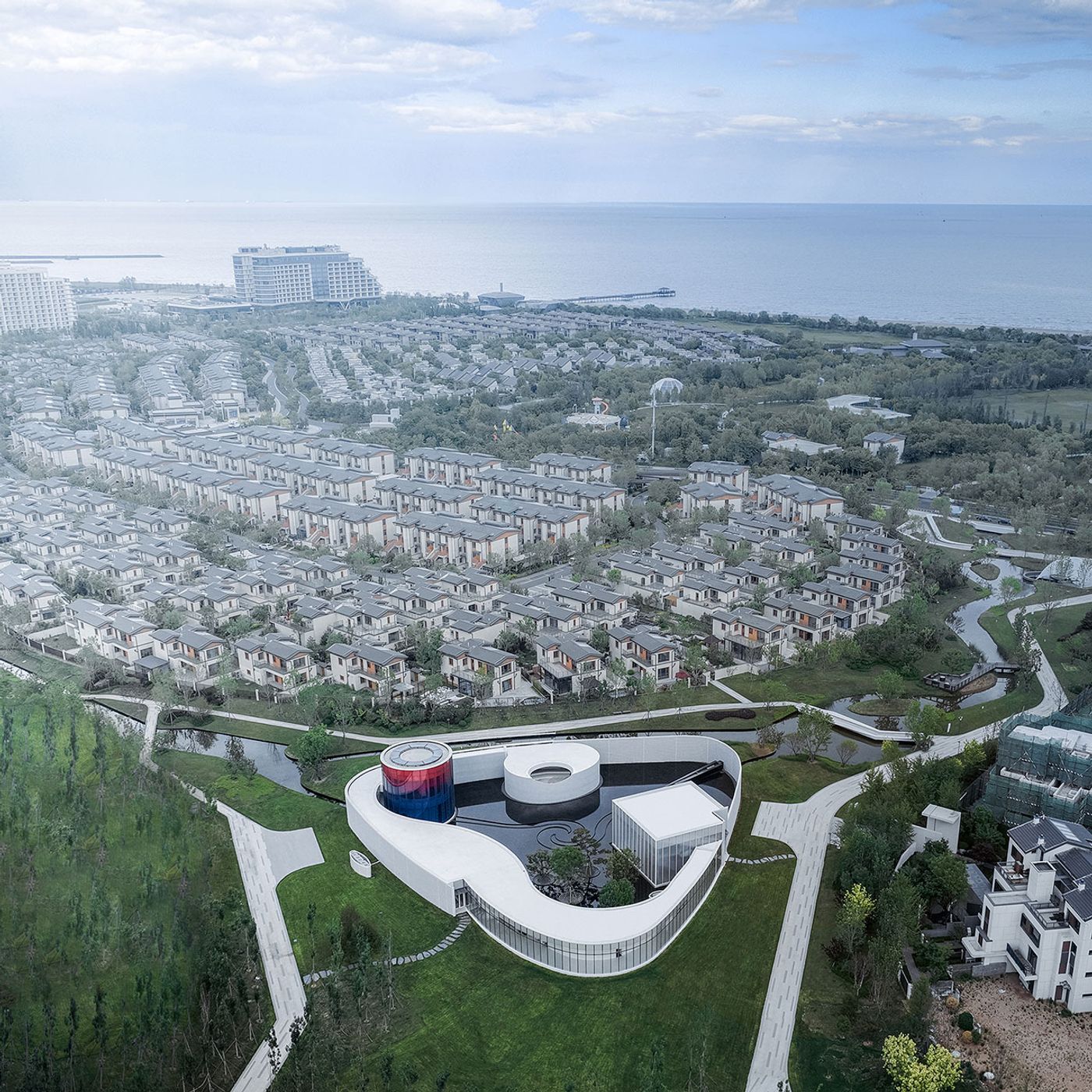
Photography © Seven W
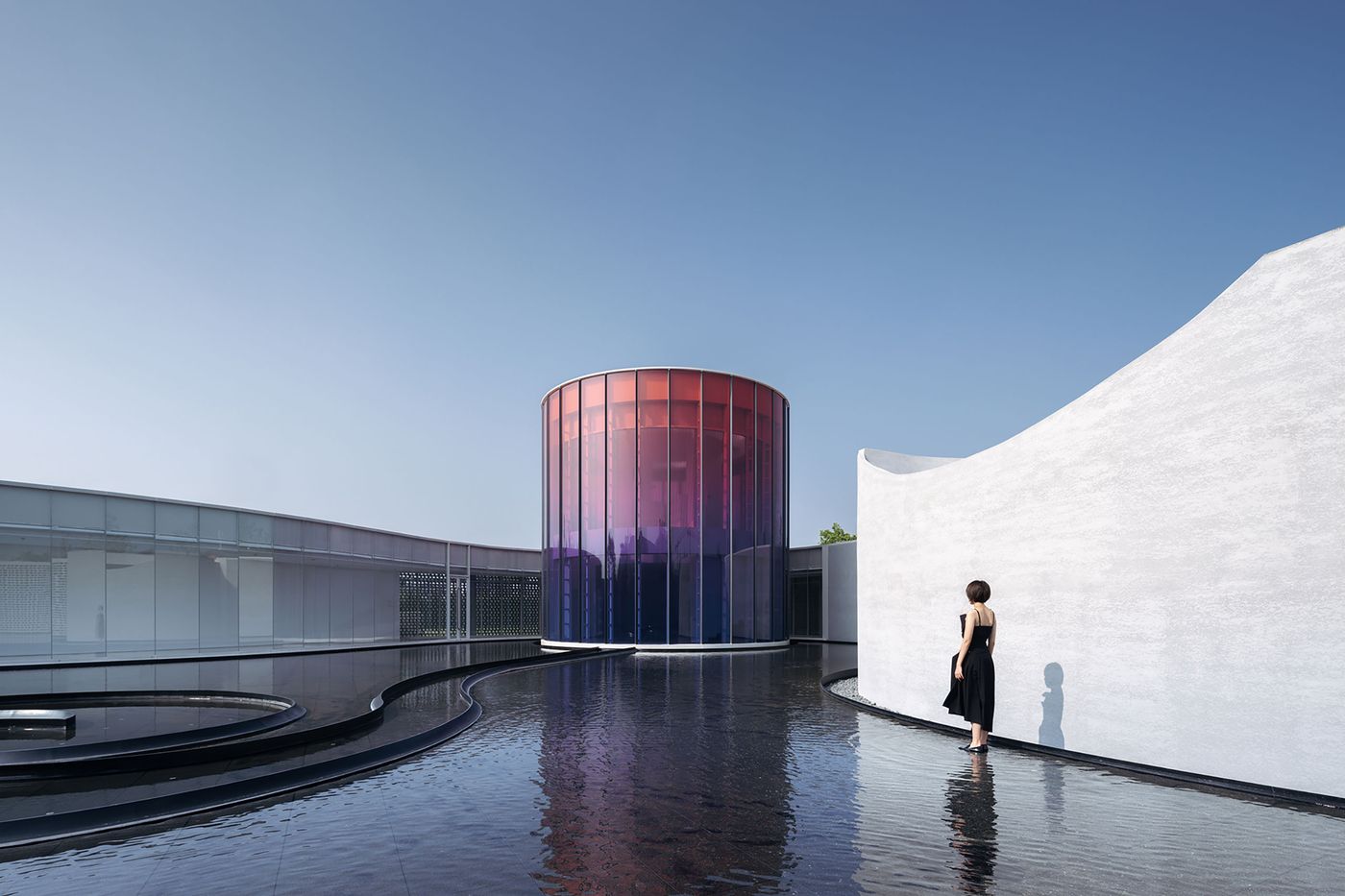
Photography © CreatAR Images
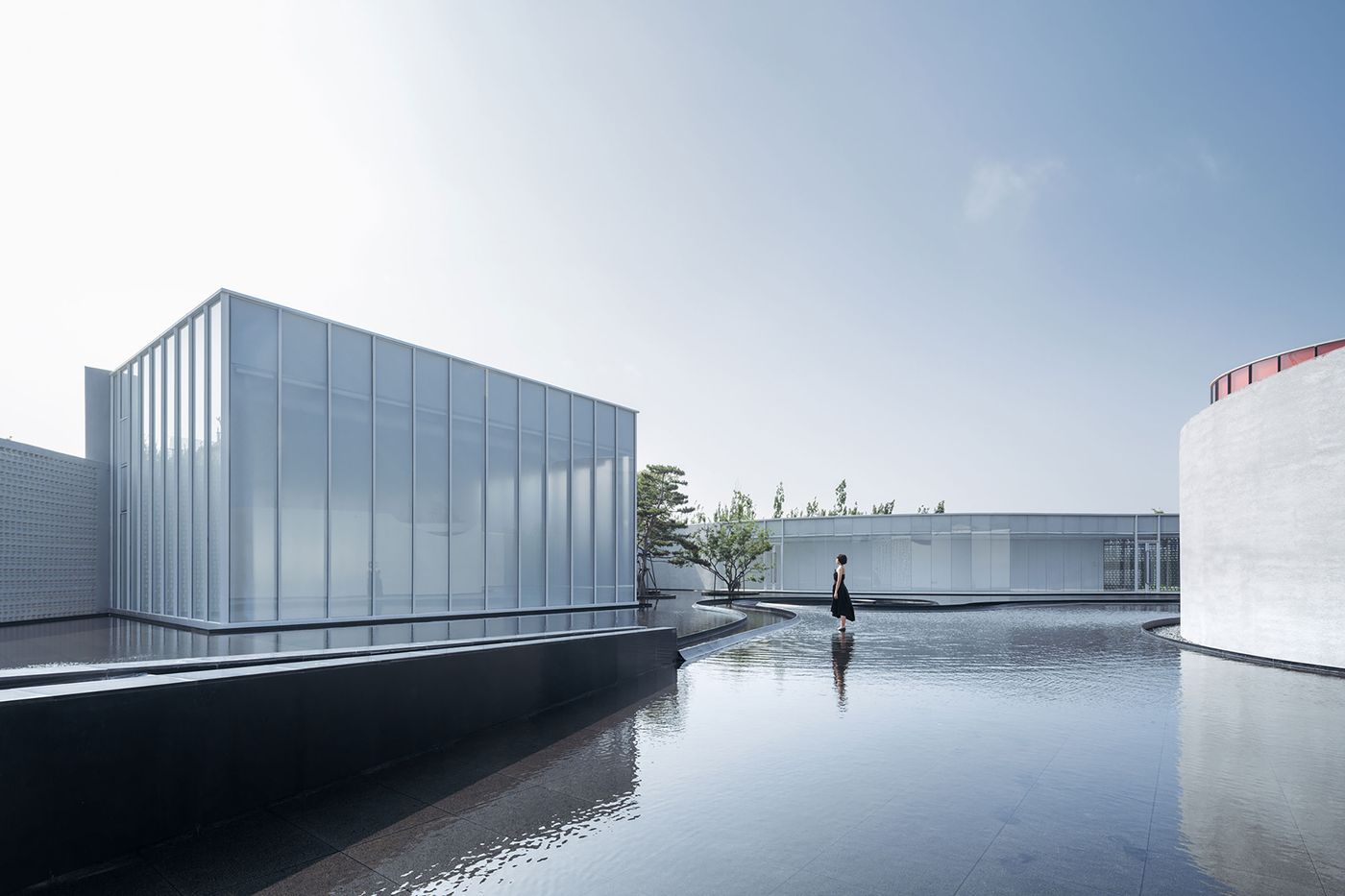
Photography © CreatAR Images
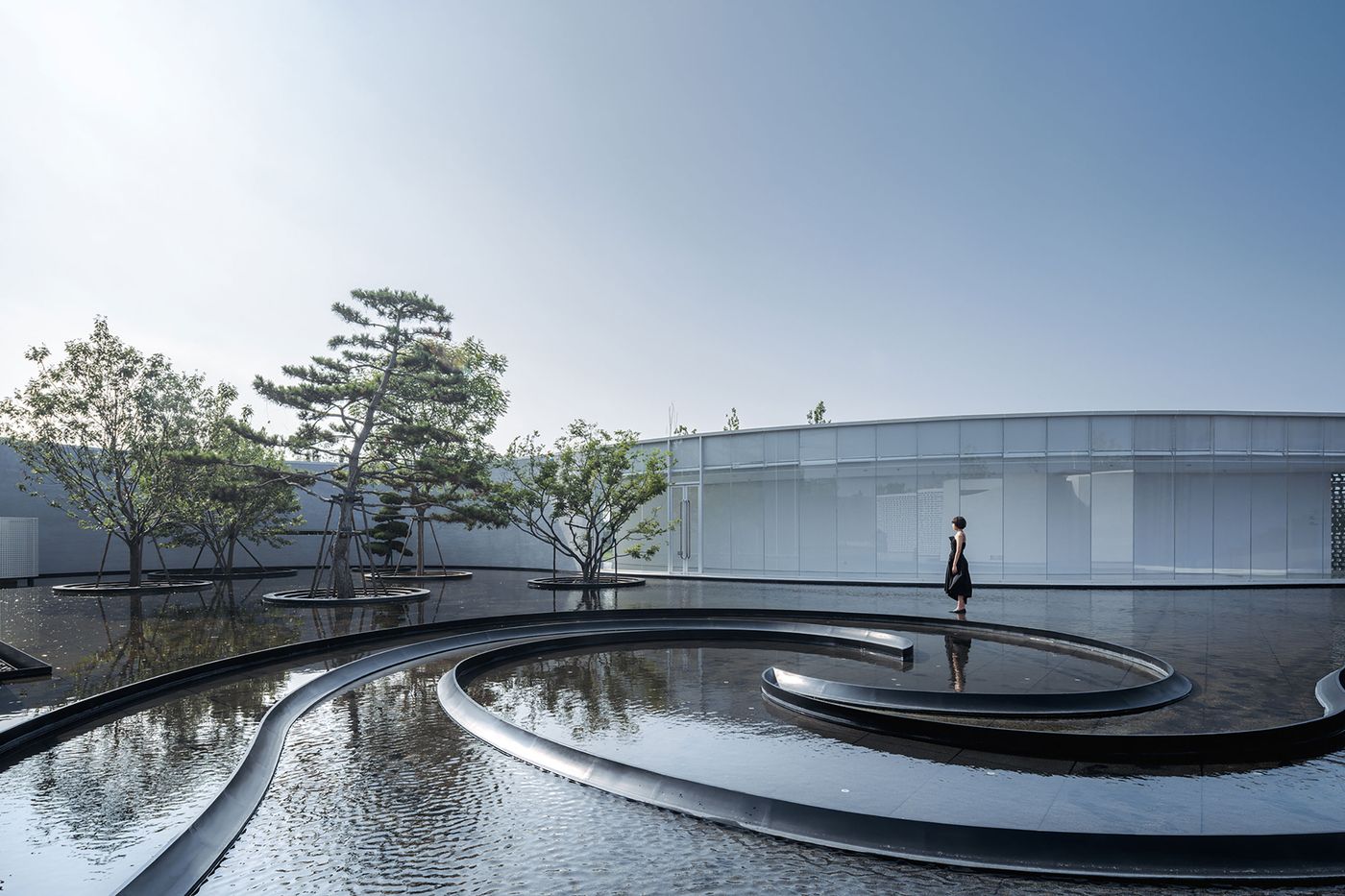
Photography © CreatAR Images
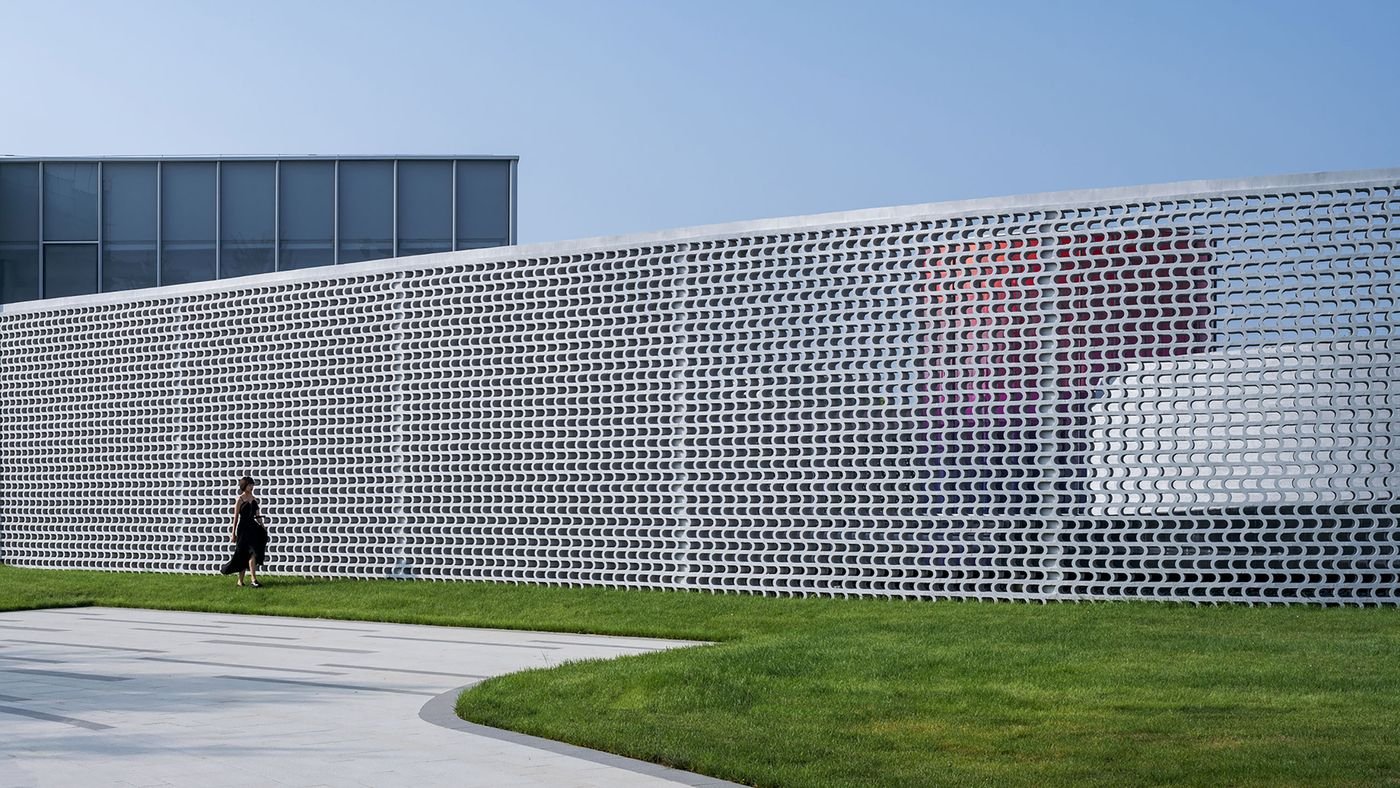
Photography © CreatAR Images
Featuring a triangular layout, the Museum has been designed, in Chief architect and founder of Wutopia Lab Yu Ting’s words, as a “slowly unfolding hand scroll” with functional spaces lining the perimeter and a black reflecting pool in the centre. Varying in both thickness and transparency, the building’s gently curving perimeter zone connects three monolithic volumes that seem to float on the reflecting pool: an oval-shaped concrete volume containing a small theatre, a glass cube housing a dance studio, and a cylindrical “glittering glass fortress” where yoga sessions take place. Unlike the three symmetrical volumes, the perimeter zone is organically shaped, widening to accommodate spaces such as the art gallery and tea room, with narrower sections serving as corridors.
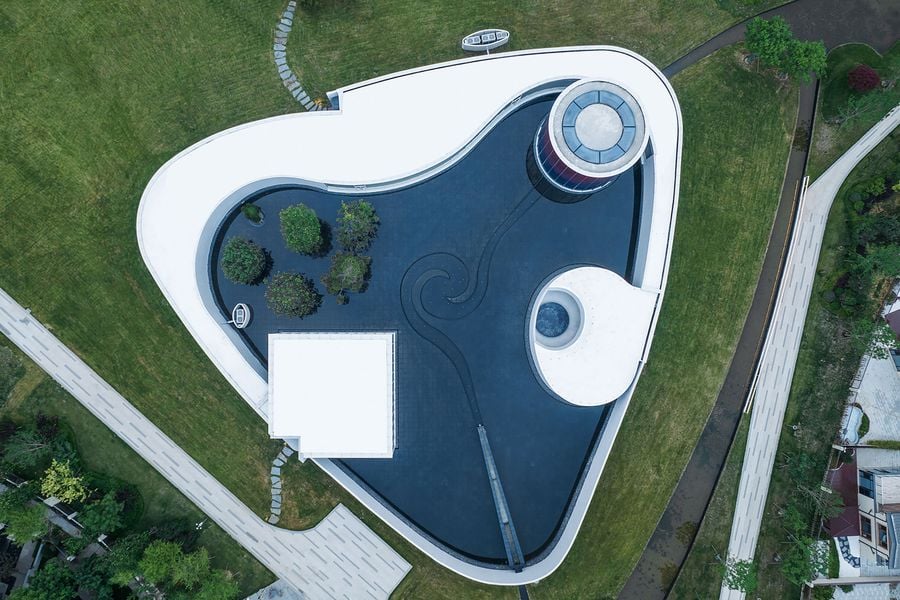
Photography © Seven W

Photography © Seven W
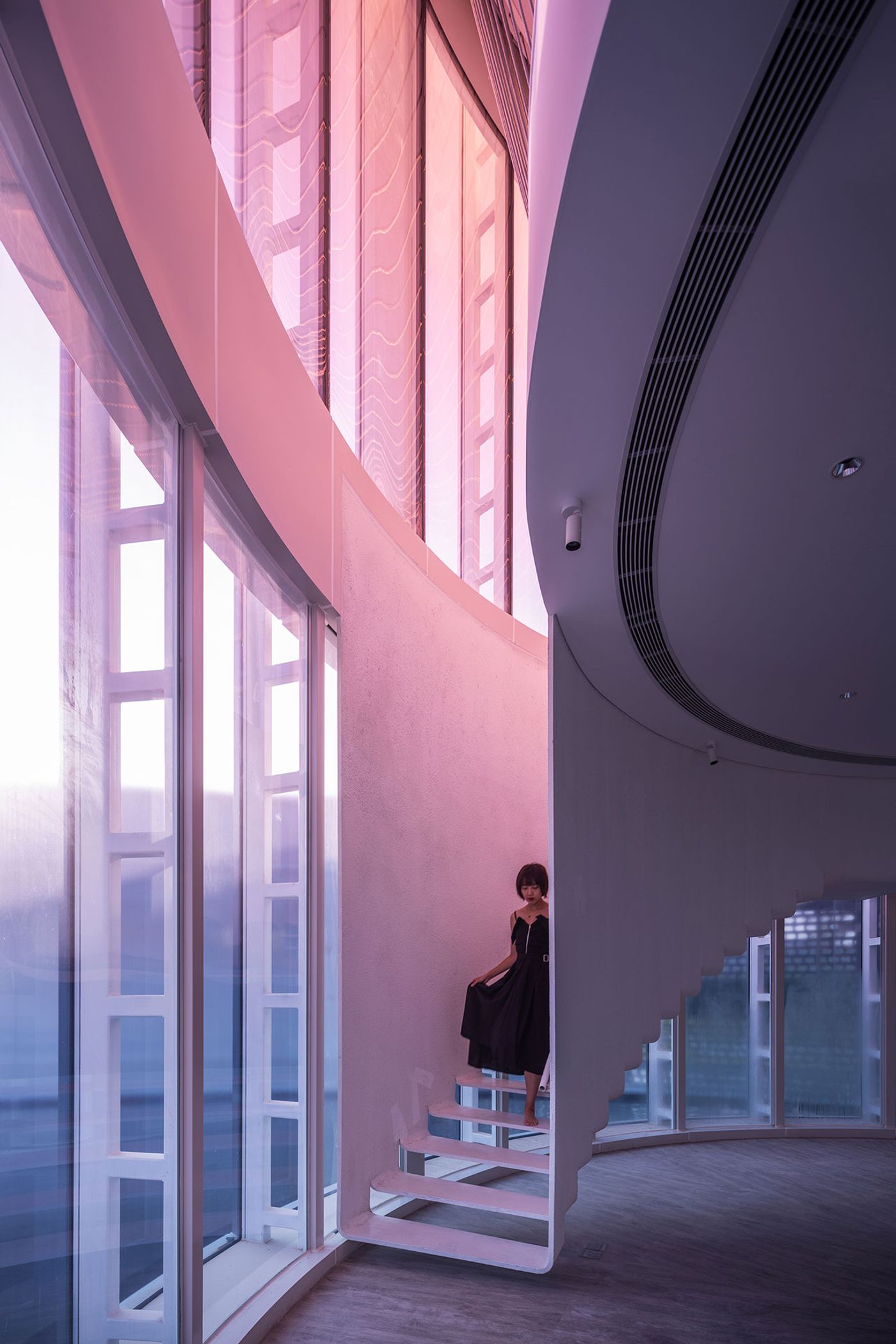
Photography © CreatAR Images

Photography © CreatAR Images
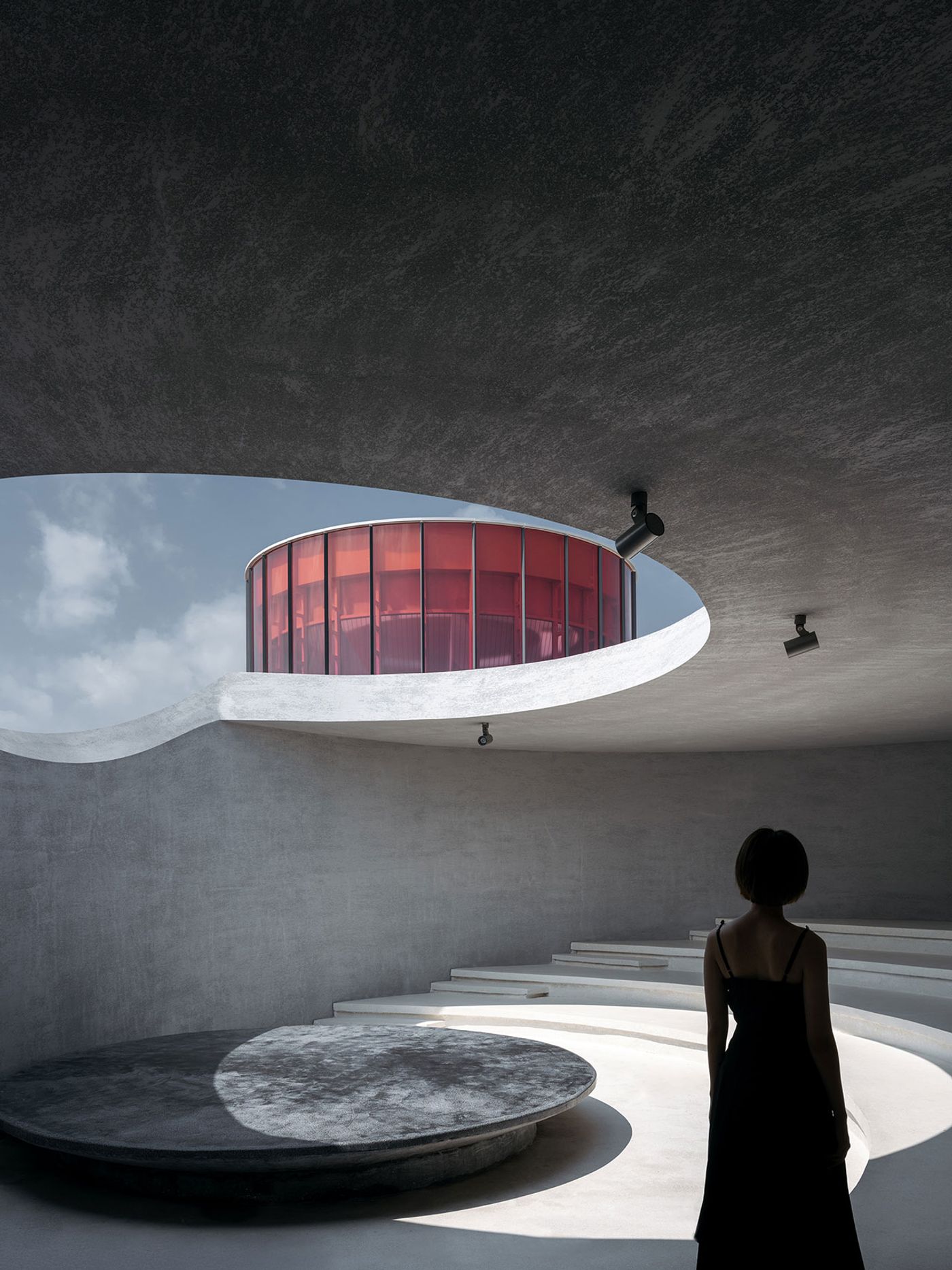
Photography © CreatAR Images
Inspired by the brushstrokes used in Chinese painting, the boundary walls shift from continuous floor-to-ceiling glazing (made possible by a slender cast-concrete ceiling slab supported by steel beams concealed within internal walls), to solid walls, through to latticework, forming "a shifting ink line", as Ting points out. The variation in transparency, which can also be found in the pool-facing wall sections, enhances the Museum’s sculptural design but also serves a more practical reason, namely controlling natural light and views according to functionality.
As the most introverted of all the spaces, the theatre’s solid volume is punctured only by a curved skylight that allows both sun and moonlight to spill into the cavernous space like a “waterfall”. On the contrary, the glass-enclosed dance and yoga studios are inundated with natural lighting, with the former clad in translucent glazing panels for privacy, and the way in which latter enveloped in red-to-blue ombré glass, an unexpected gesture that adds a welcoming splash of colour in the otherwise monochromatic colour scheme.

Photography © CreatAR Images
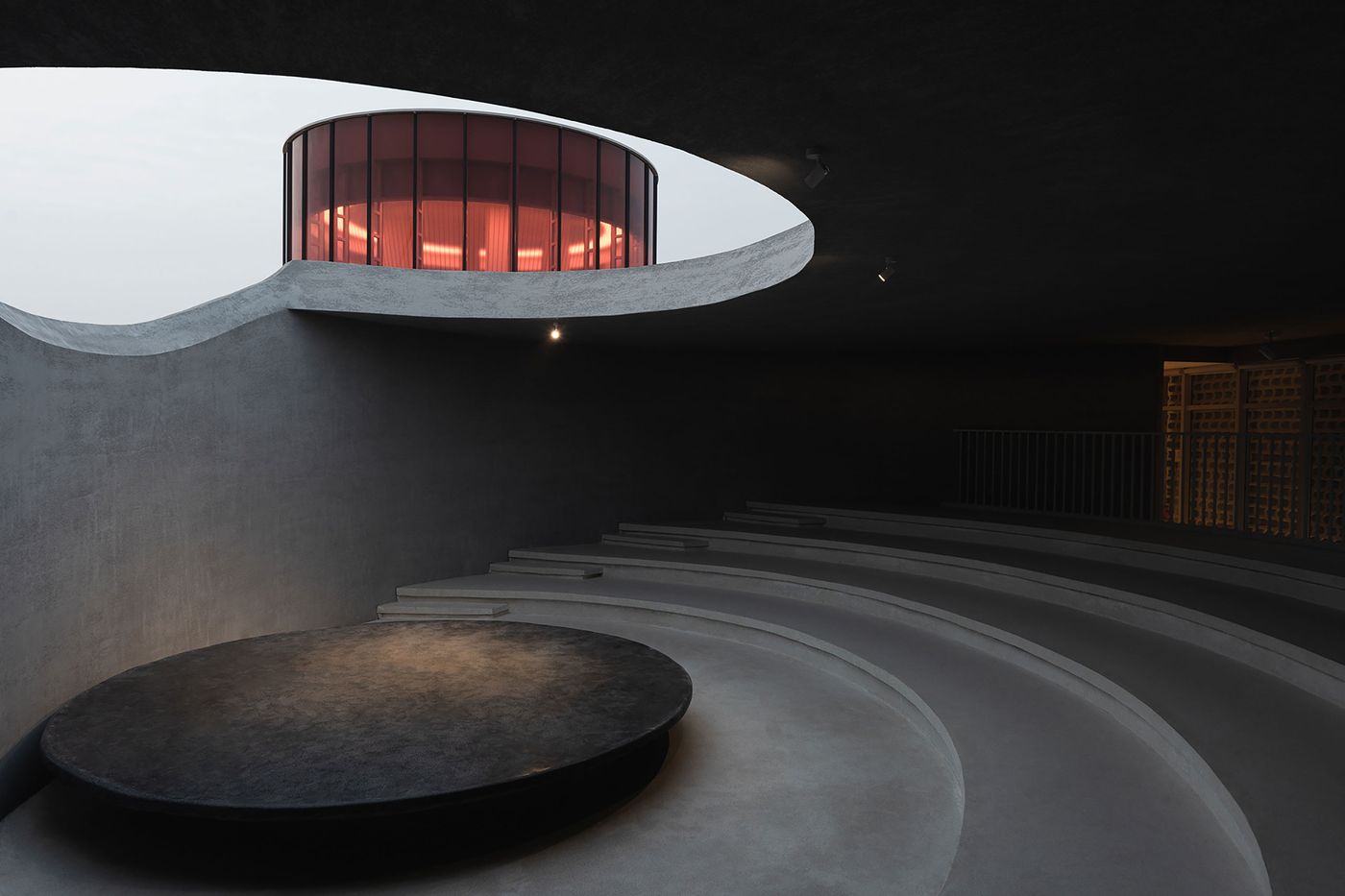
Photography © Seven W
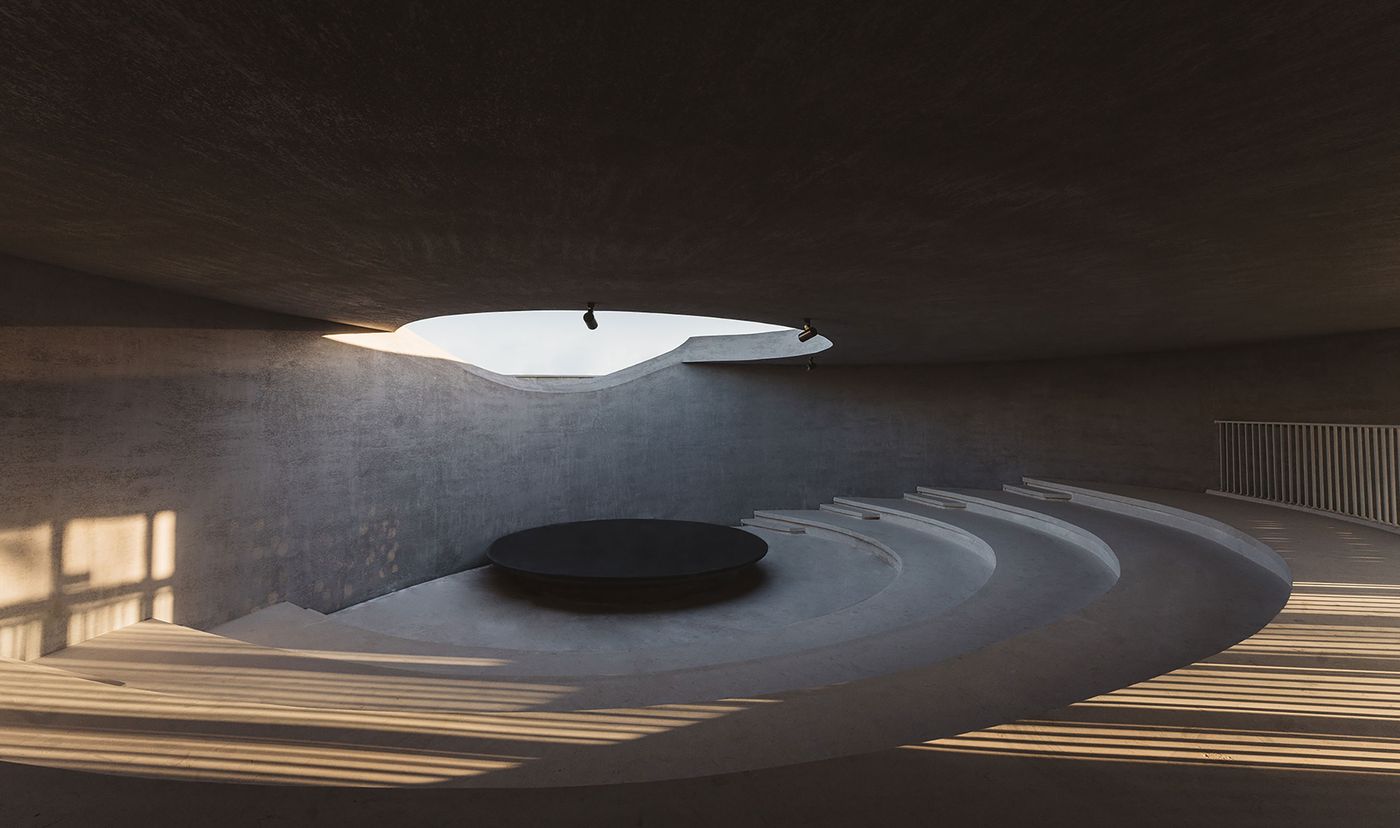
Photography © Seven W
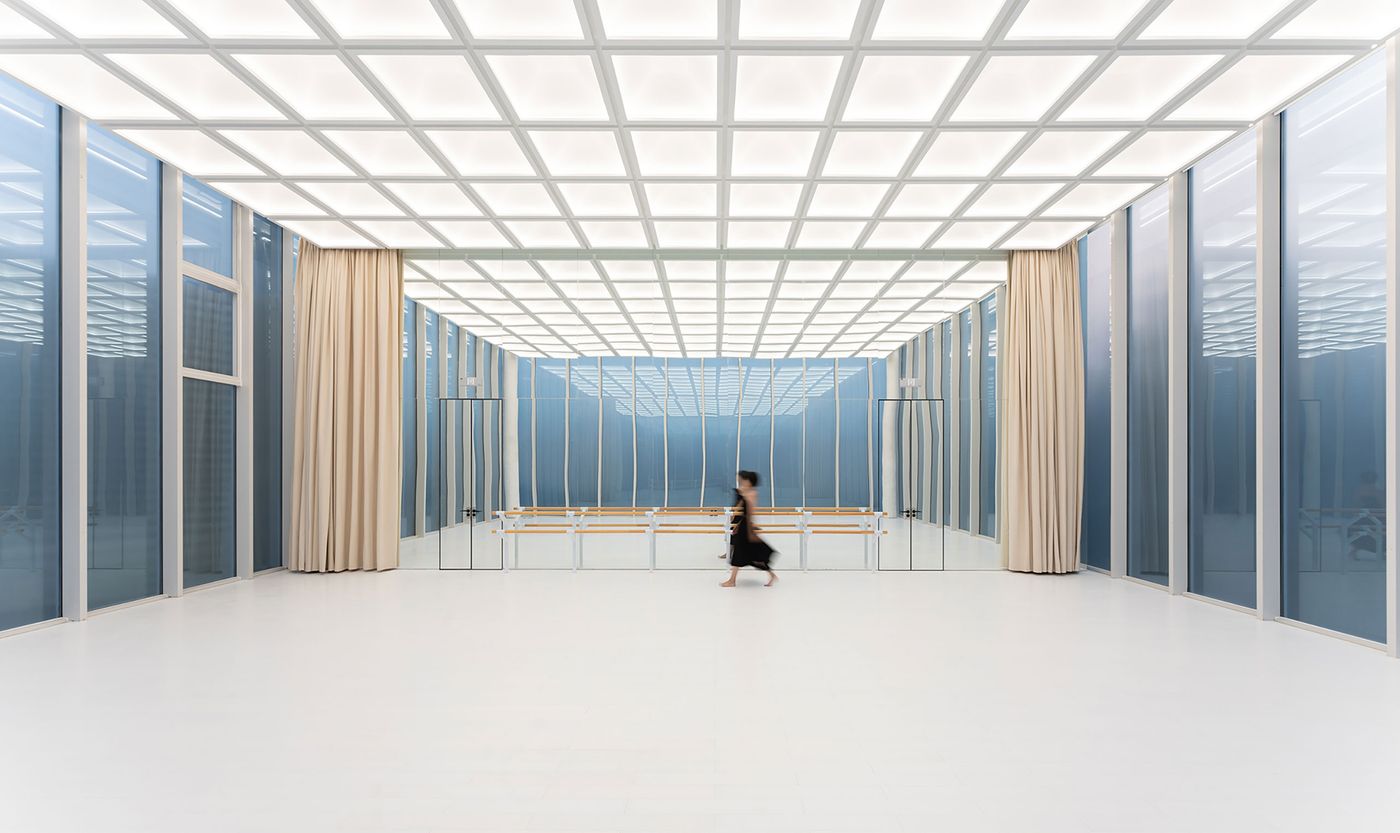
Photography © Seven W
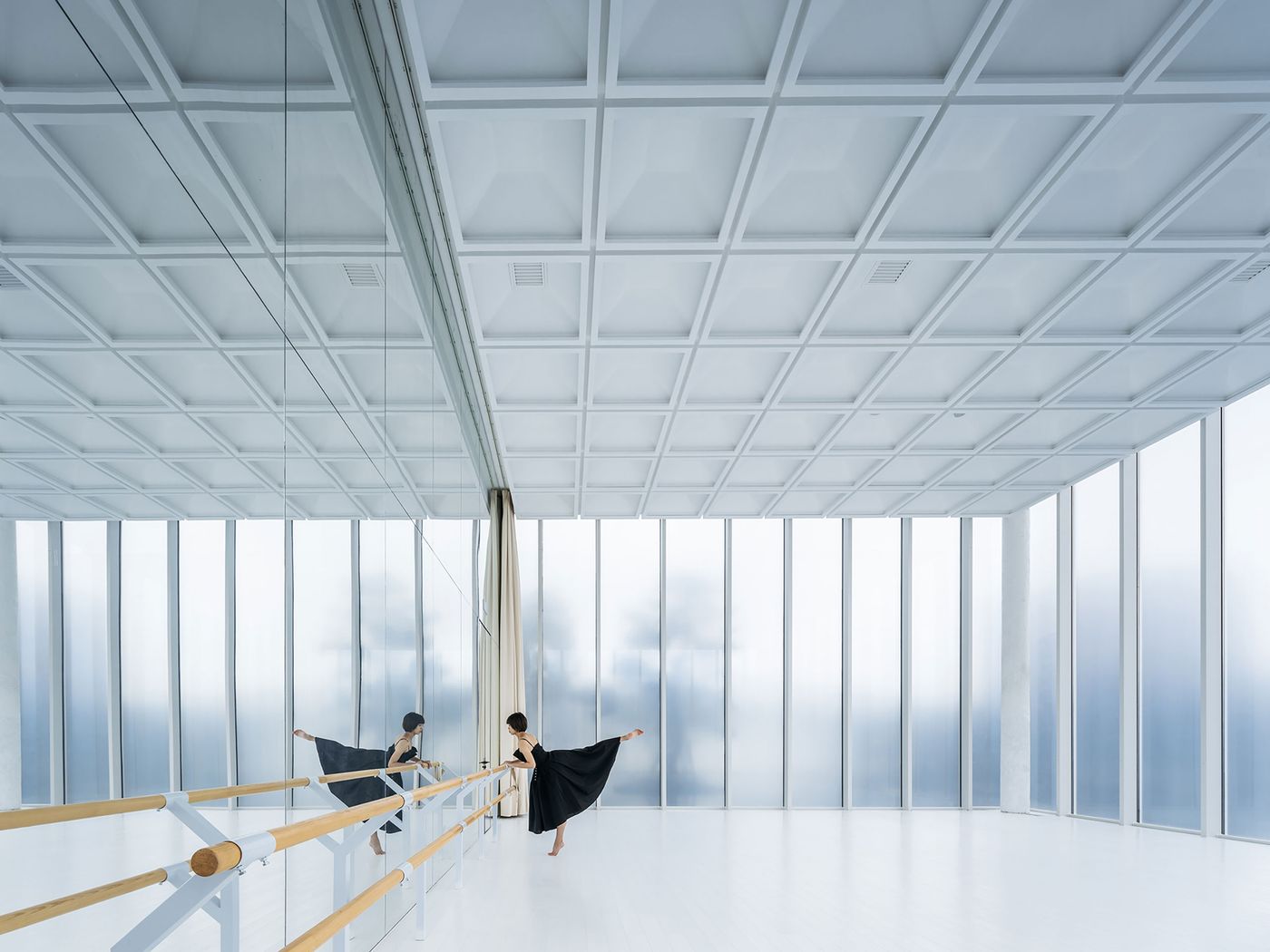
Photography © CreatAR Images
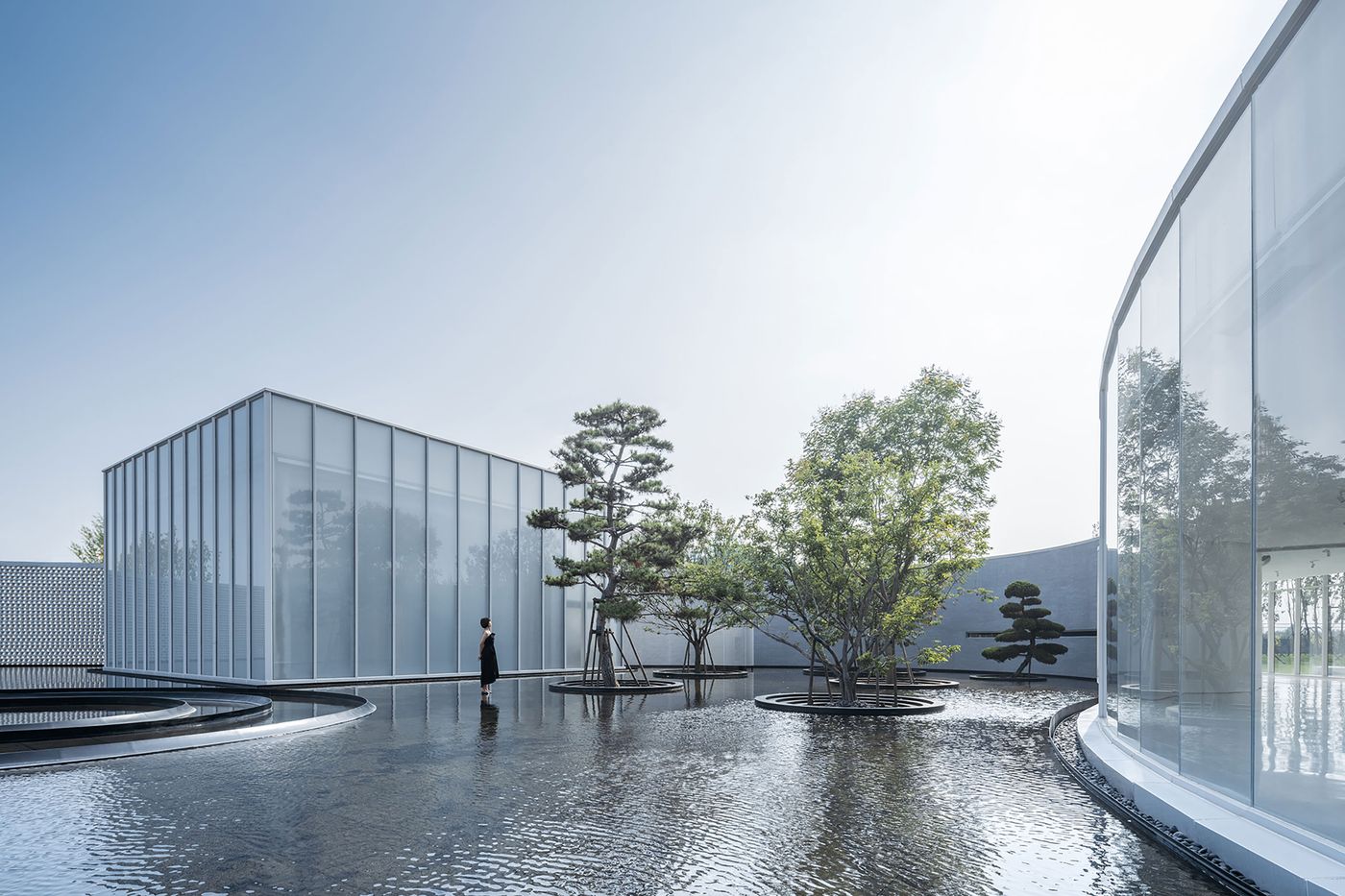
Photography © CreatAR Images
The choreographed circulation of visitors around the central reflection pool is echoed by a sinuous flowing water channel that Ting describes as “a surging current in the calm water courtyard”. Beginning as a fountain, the channel spirals and twists its way across the vast pool before it disappears below the yoga space, coursing through the building’s foundation and finally emptying out of sight into the Yellow Sea. The stream’s ethereal sensibility is matched by the encircling “flower” wall, a lattice construction made with curved concrete blocks, and six trees that seem to grow out of the pool, a reference to a landscape painting by the Yuan dynasty artist Ni Zan – ultimately providing another facet in how the Museum has succeeded in paying tribute to both traditional Chinese landscape painting and zen sculpture gardens.
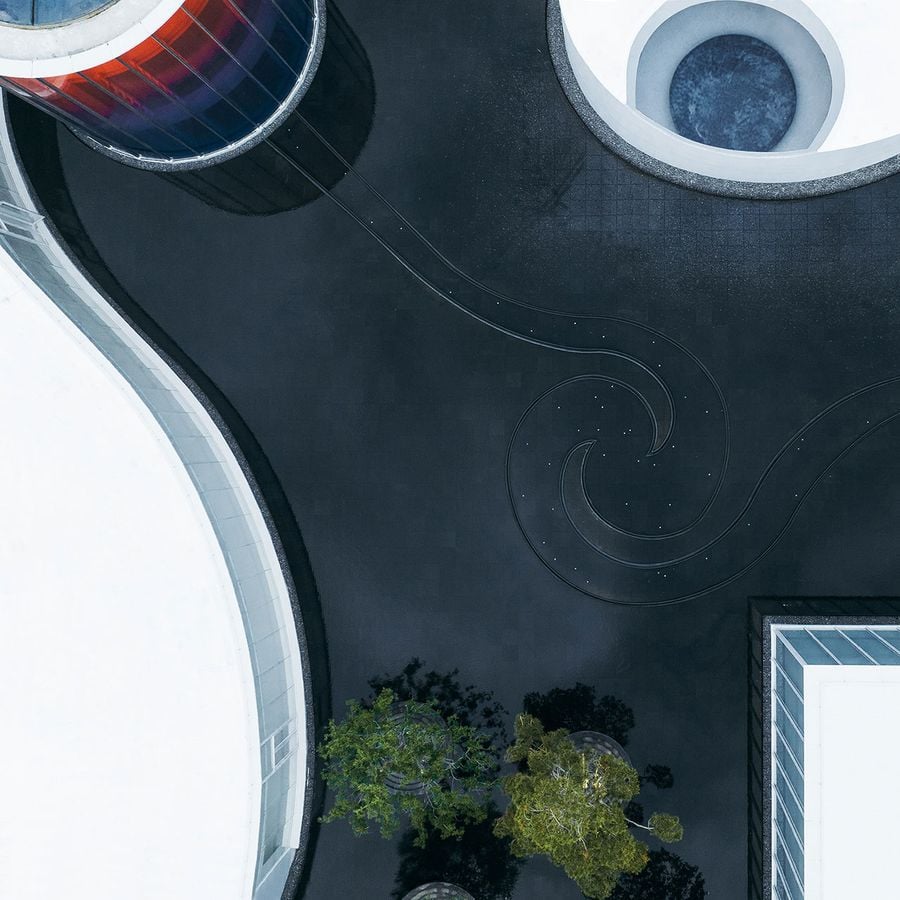
Photography © Seven W
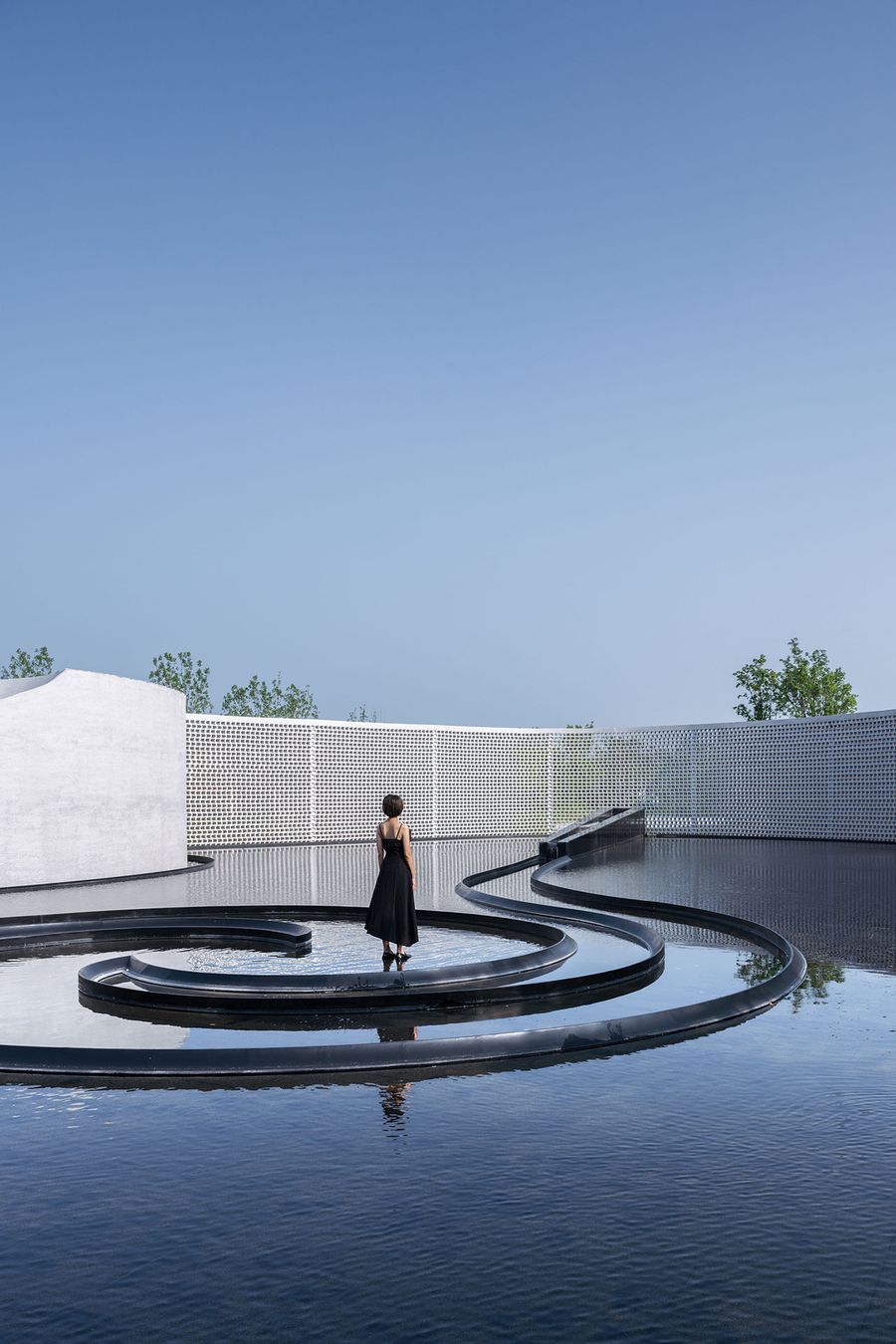
Photography © CreatAR Images
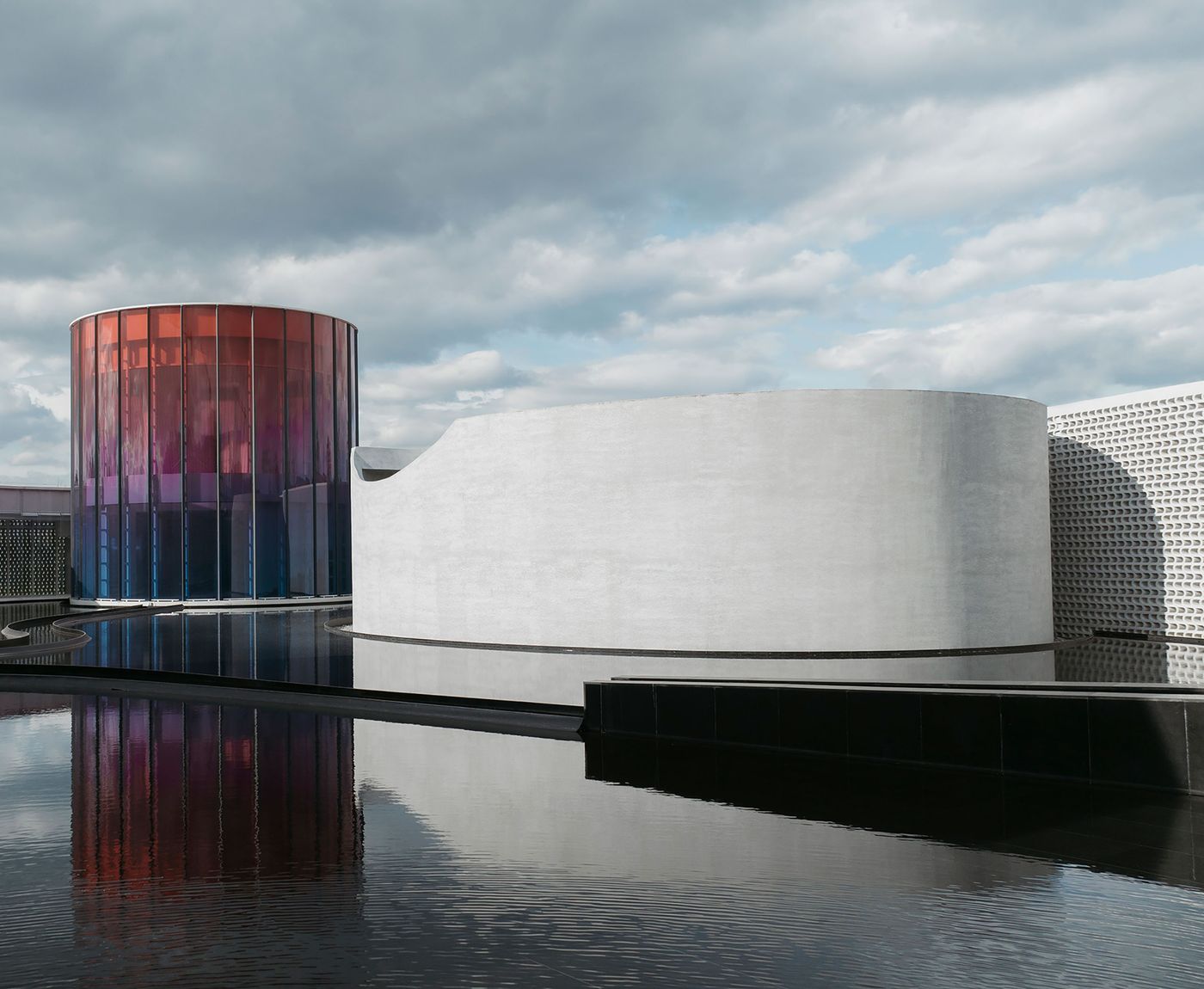
Photography © Seven W
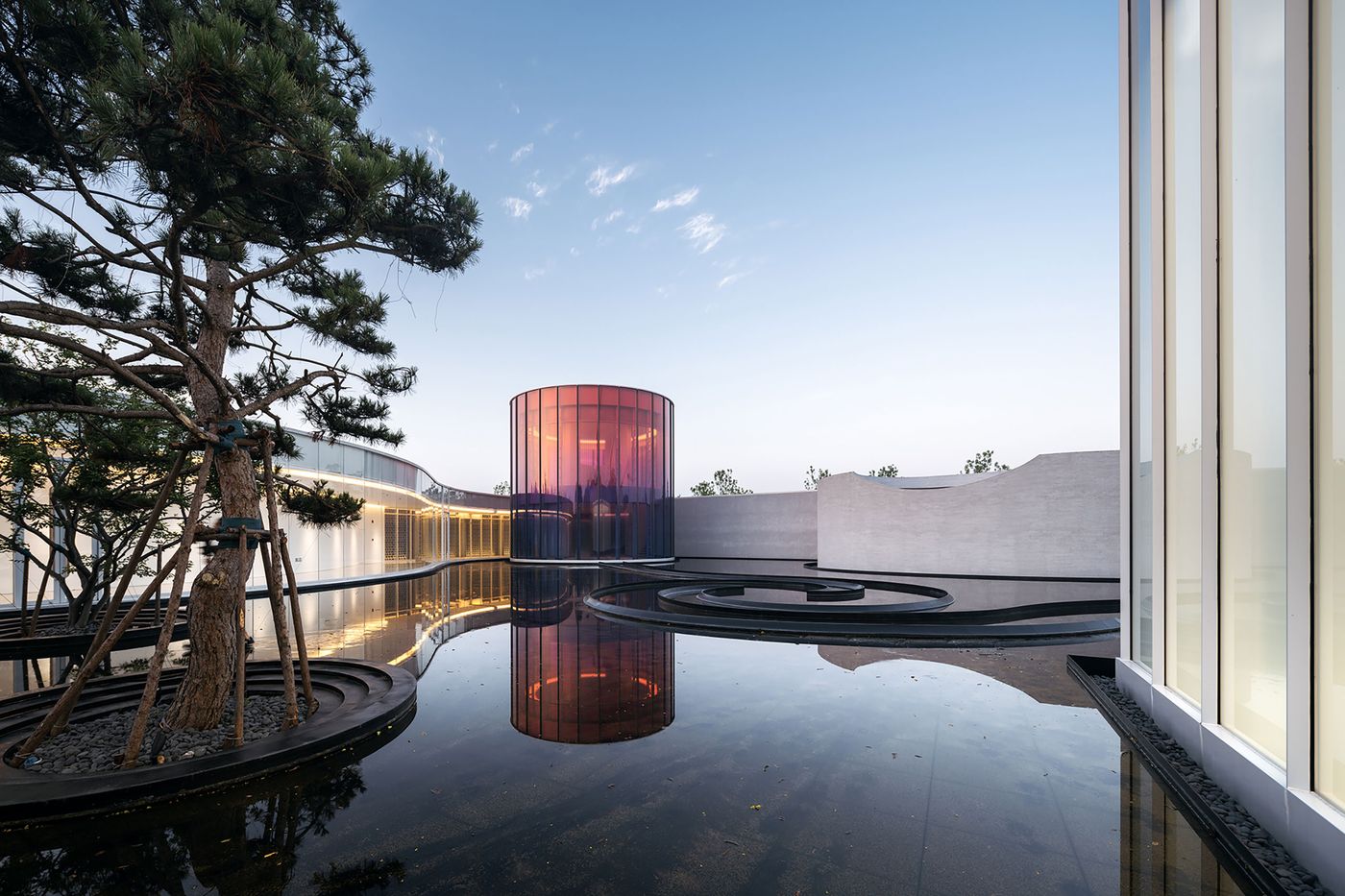
Photography © CreatAR Images
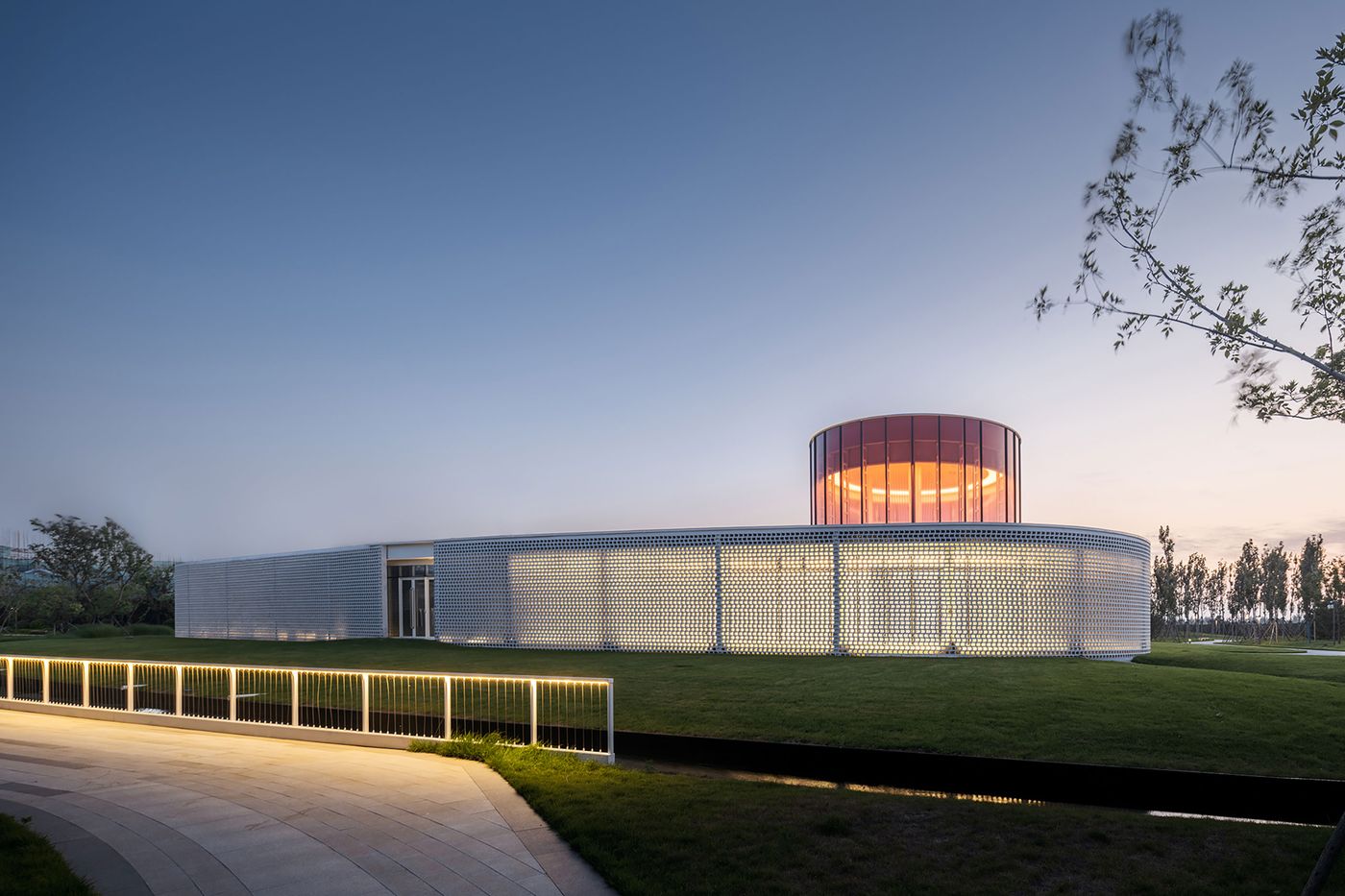
Photography © CreatAR Images
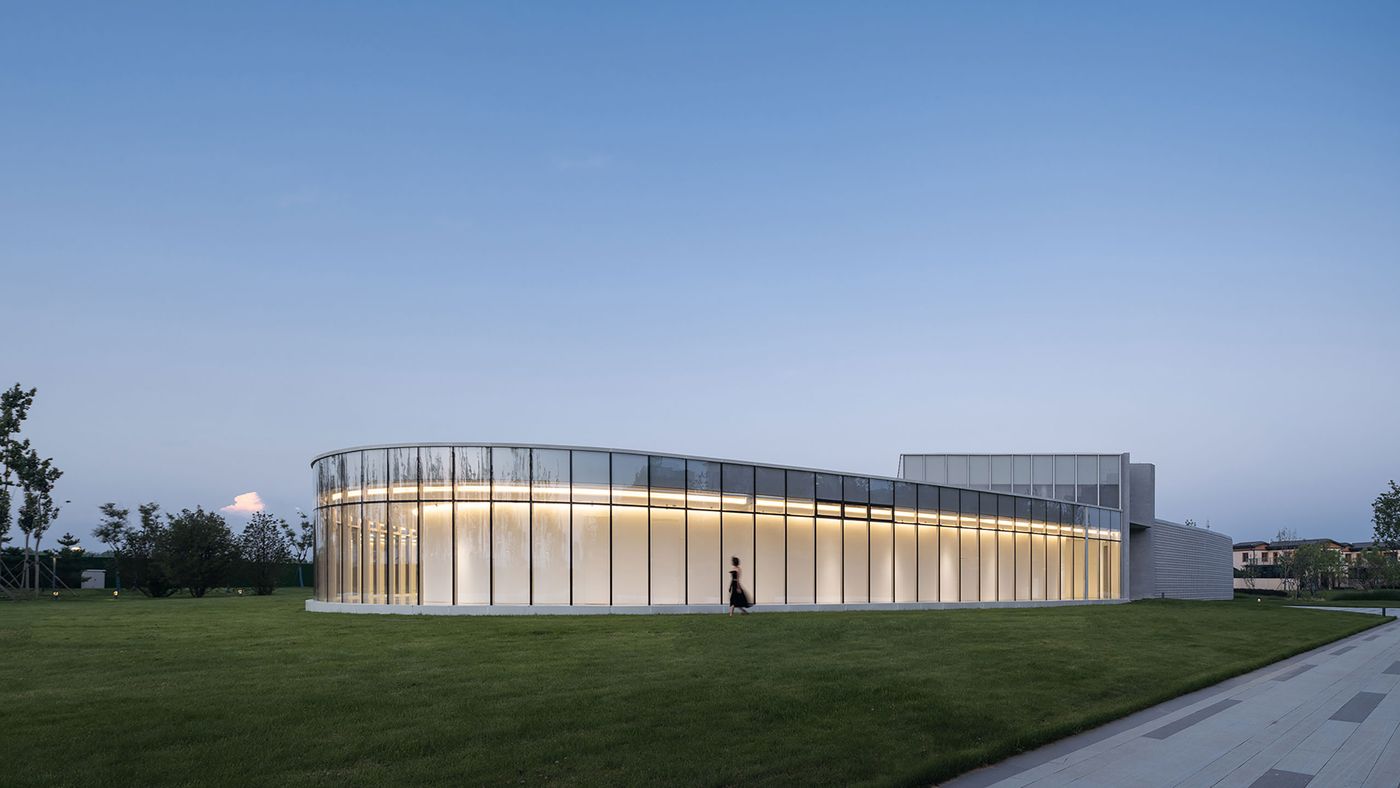
Photography © CreatAR Images
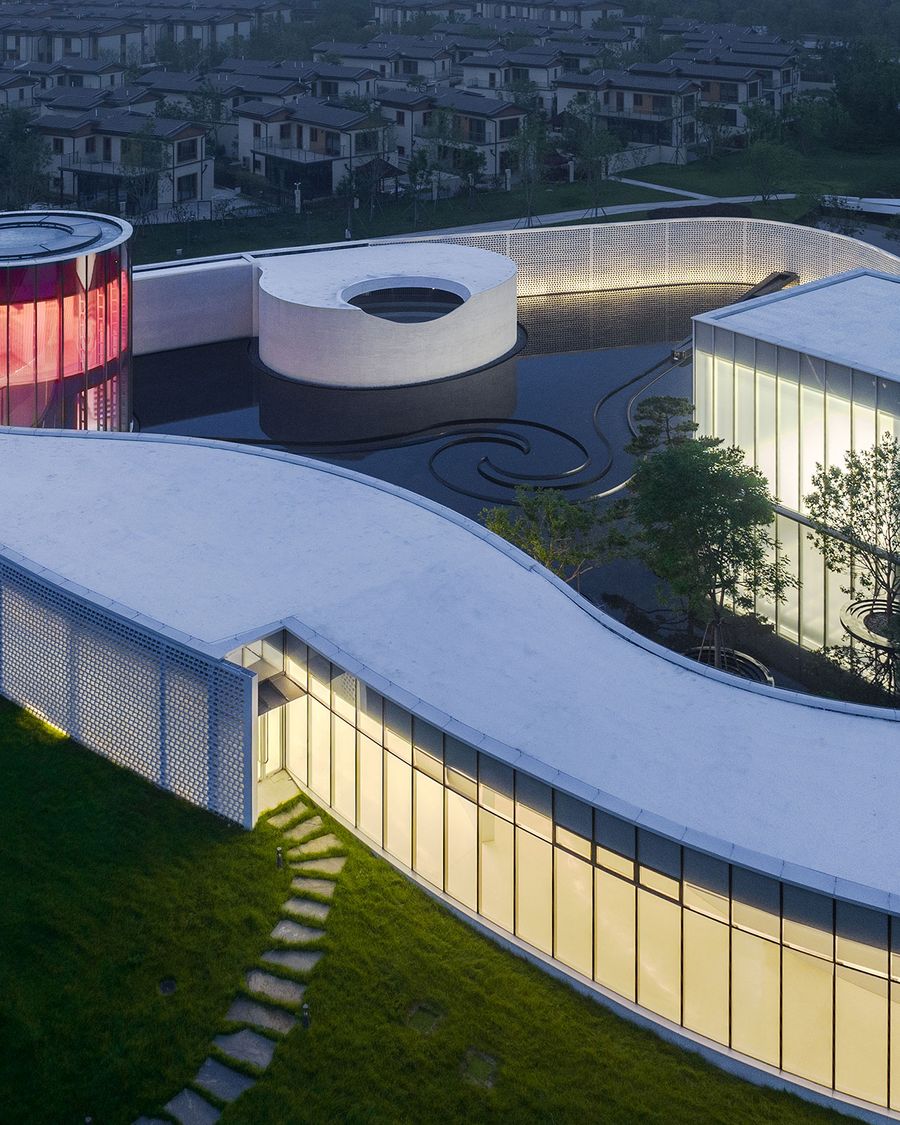
Photography © Seven W

Photography © CreatAR Images
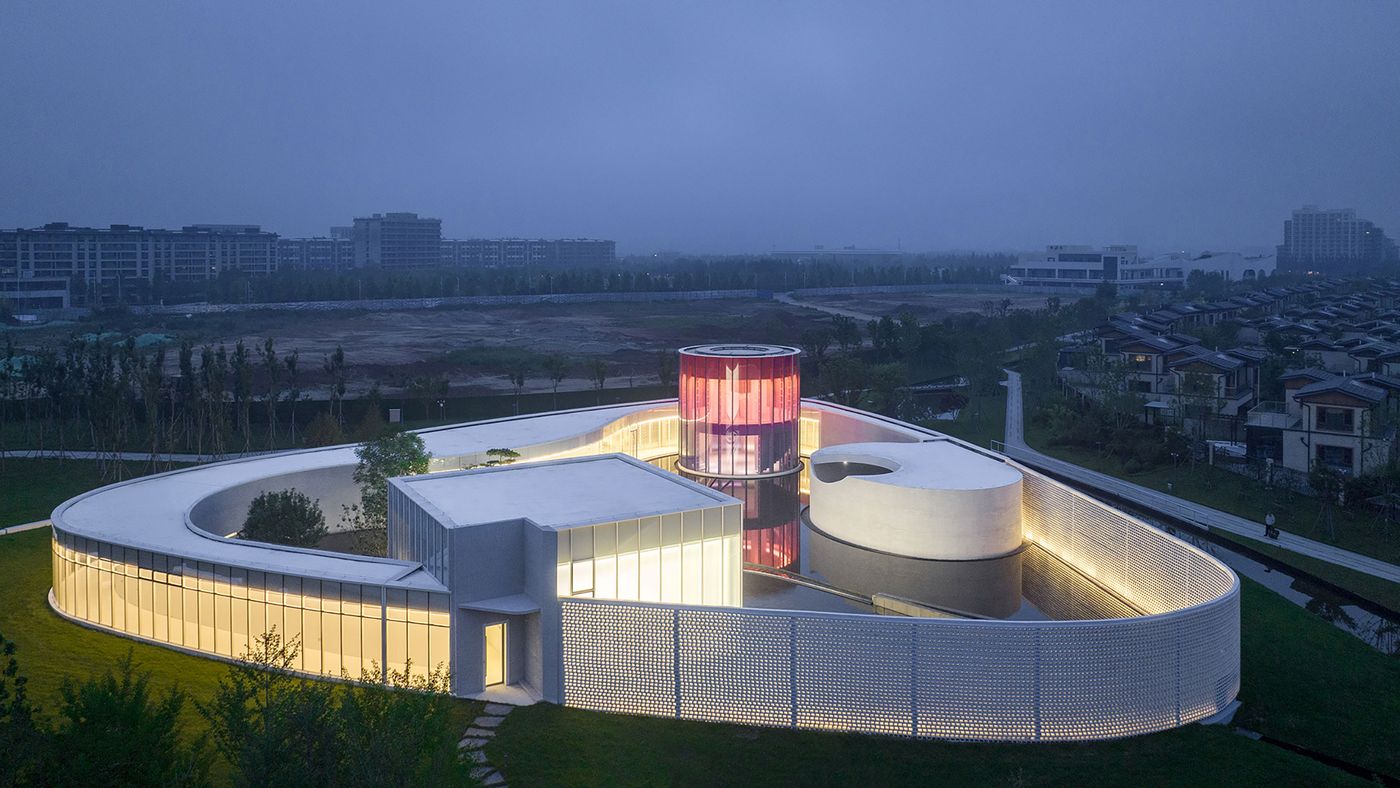
Photography © Seven W
